- Join our email list

10 essential research tips for historical fiction writers
by Andrew Noakes
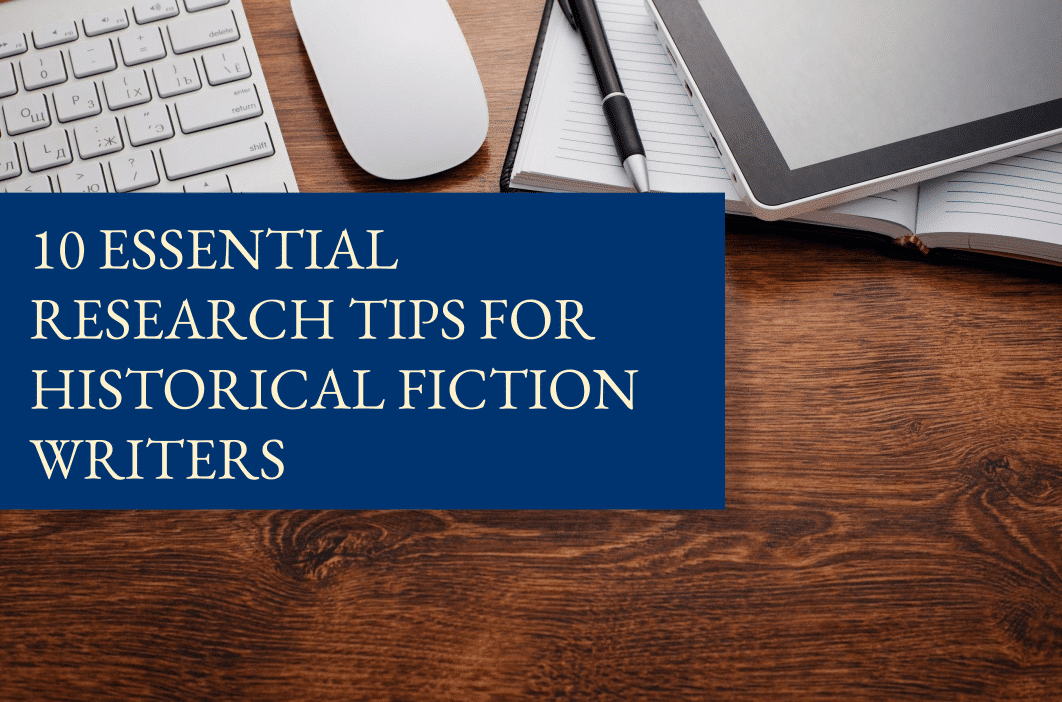

Includes…
Online archives with thousands of primary sources, image, video, and audio resources, maps, language tools, and specialist blogs.
1) Start with a plan
Even if you’re a pantser, you should plan out your historical research in advance. If you don’t, you’re likely to miss things. Start by figuring out what you need to know, then research a list of sources that will help you get there. I advise listing them by type and/or focus (e.g. primary, secondary, political background, daily life, etc.)
2) Take notes and record sources
No matter how big your brain, you’re not going to be able to remember everything you read, so take notes. They don’t have to go on for hundreds of pages, and they don’t even have to be that well organised at first (you can sort that out later), but I would recommend keeping note of where vital bits of information come from. Believe me, you’ll need to refer back to your sources.
3) Cross-reference
One of the first things you need to know about historical sources – whether primary or secondary – is they can be wrong. Errors can range from small and annoying (incorrect dates, misspelled names etc.) to major and highly problematic (like ascribing historical events to the actions of the wrong people).
The important thing is to try and cross-reference everything you read, especially the important things like critical dates and key figures. You should even try and cross-reference small details like diet and clothing when you can. Mistakes in these areas can really put readers off.
4) Check the provenance
Sometimes, errors in historical sources stem from the agendas of those who wrote them. In truth, there’s no such thing as an unbiased source. Every piece of historical writing will, to some extent, be influenced by the outlook of its author and the trends of its time.
The most misleading sources, though, are those that deliberately obscure the truth. Some seek to absolve their authors of blame for a particular historical event; others may seek to cast false blame to damage someone’s reputation. The point is this: the likely purpose of a source affects how we should read it. So always check provenance.
5) When sources disagree…
Sometimes, two sources will contradict each other even though they both seem credible. This can be down to a legitimate difference in interpretation, and in those cases you can feel safe in siding with the interpretation that you find most convincing. You can also adopt your own interpretation, providing it’s plausible and you can back it up.
Occasionally, though, the contradiction occurs because one source has got something wrong. If you’re unable to cross-reference further (i.e. if there aren’t more than two credible sources), then you’ll have to make a judgement call. Which source has more consistently got things right? Which source has the greater authority? Consider these carefully and make a decision, then note the contradiction and your approach to resolving it in your historical note if you’re using one.
6) When there are no sources at all…
This is more and more likely to happen to you the further back your story is set. But try and turn it on its head for a second: remember, you’re not a historian. It’s part of your craft to fill in the gaps with your imagination. In fact, some of the best historical fiction stories grow between the cracks found in history.
If something cannot be known, then so long as your interpretation feels plausible, it’s entirely legitimate to chart your own path. Just make sure you explain the gaps and how you filled them in your historical note.
7) Strike a balance between primary and secondary sources
Primary sources can give you an authentic flavour of your chosen era, and they can help you to reproduce authentic voices in your story as well, to say nothing of their value in providing a deeper insight into historical events.
But secondary sources are also vital for providing you with a wider perspective on those events. Historians can assess things with the benefit of hindsight and through a broader lens.
In truth, you need to use a good mix of both primary and secondary sources in order to properly research your period.
8) Don’t just look for the facts, find the essence of your era as well
Sometimes, I read a manuscript and I just don’t feel ‘in the period’. It might be the way the characters speak to each other, it might be their social and political attitudes, or it might be their etiquette. Whatever the case, the story will feel off.
That’s why it’s important not just to learn the core facts of your period, but to immerse yourself in it as well. Historical fiction authors who do this well recommend reading diaries, newspapers, and other primary sources, investigating cultural artefacts like art and music, and even eating meals from your era!
9) Knowing when to start writing
When do you know you’ve reached that magic point where you’ve done enough research and you can finally start writing?
The truth is you’ll probably never know for sure. After all, there’s no truly objective way to measure it. But it helps to make a list of questions you think you need the answers to before you begin writing. Once those have been answered satisfactorily, you’ll know the time for writing is near.
10) Research while you write
Just because you’ve started writing, it doesn’t mean your research is over. You can – and should – continue to research while you write to enrich your understanding of your period and keep your knowledge fresh. Sometimes, a little bit of extra research can also ignite the flame of inspiration if you’re struggling with writer’s block.
So, there you have it. Those are my 10 essential research tips for historical fiction writers. I hope you find them useful as you research your next story. If you’re looking for more guidance, don’t forget to download our 50+ top online research resources as well.
P.S. Solid research is just one aspect of writing historical fiction. To learn about the others, make sure you read our dedicated guide, How to write historical fiction in 10 steps . You might also be interested in Top tips on writing historical fiction from 64 successful historical novelists .
Do you write historical fiction?
Join our email list for regular writing tips, resources, and promotions.
Writing guides
How to write historical fiction in 10 steps
Top tips on writing historical fiction from 64 successful historical novelists
Beta reader service
Get feedback on your novel from real historical fiction readers.
ARC service
Use our ARC service to help generate reviews for your book.
Top resources
Guide to accuracy and authenticity in historical fiction
Novel outline template for historical fiction writers
60 historical fiction writing prompts
How to write a query letter
Featured blog posts
30 top historical fiction literary agents
How to write flashbacks
When (and how) to use documents in historical fiction
How to Research a Historical Novel: Escape the Research Rabbit Hole
by Guest Blogger | 0 comments
Want to Become a Published Author? In 100 Day Book, you’ll finish your book guaranteed. Learn more and sign up here.
It doesn't take any research to know that historical fiction writers love spending time in history books, digital archives, museum exhibits, and library collections—and that's just in our spare time!
But how do we keep that research from overshadowing the actual writing of our books? How do you research a historical novel without getting lost in the research rabbit hole?
This guest post is by Susanne Dunlap, author of twelve works of historical fiction for adults and teens. You can find her newest book The Portraitist here and find all her books and courses on her website susanne-dunlap.com.
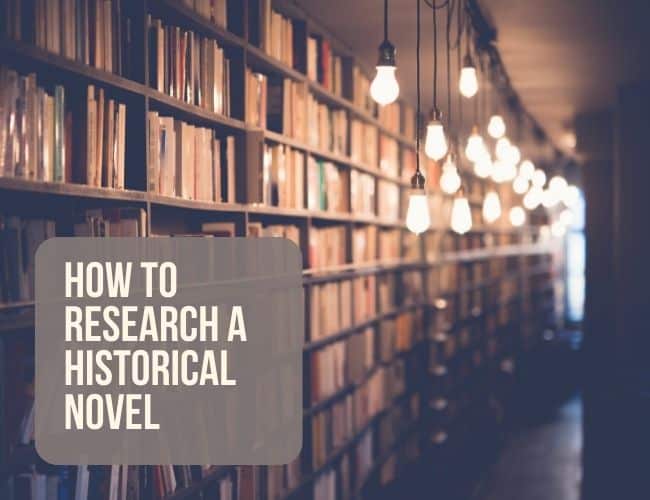
Face it, none of us would write historical novels if we didn’t love the research. If we’re lucky enough to go to historical archives, the very smell of the dust, the idea that the materials and primary sources were handled by people decades or centuries ago, gives us a thrill.
And when we discover something others have overlooked, maybe that little fact that gives us something to hang an entire plot on—pour the champagne! History inspires us, it amazes us, it fascinates us—it torments us.
Research is wonderful and essential. But it can so easily commandeer all our time and energy.
How far do you need to go to track down a person or a date? What if you can’t go to places or get ahold of archival material? Do you have to know everything about the historical period and place and characters in your novel?
Won’t readers be waiting with red pens to circle any little thing you get wrong, or take exception to your interpretation of a historical character’s motives?
And what about the sheer volume of material we now have access to, thanks to the Internet and online archives? One thing leads to another and then another and then another. Before we know it, weeks have passed and we’ve got tons of research but haven’t put a word on a page.
How to Escape the Overwhelm of Research
I had to let go of that tendency to remain mired in research in a hurry when I was forced to research and write a complete manuscript in a year. It had been sold on a one-page proposal.
As I wrote, I remember being certain that someone would take me to task for changing the year a composition by Chopin was published, which I had to do in order to make my story work. But no one cared in the end.
That’s when I first learned that the story comes first, history comes second—a lesson I've had to learn over and over. Story first, history second.
That may sound like sacrilege coming from someone who started writing historical fiction after being in the academic world—a PhD in music history from Yale.
In academic articles, it really mattered that I’d consulted every known source, verified everything and didn’t categorically state something unless I knew it was backed up with historical sources and facts. I learned that the hard way, submitting articles for peer review. Ouch.
When I chose to start writing historical fiction, the research obsession was still deeply ingrained. For the sake of readers and my own sanity, though, I had to learn how to subjugate research to story.
I don’t mean being inaccurate or anachronistic (when a detail is in the wrong time period such as a television in 11th century Europe). I mean becoming comfortable with the necessary limits and with using my own imagination to fill in any gaps.
When My Research Turned Into a Rabbit Hole
My novel The Portraitist is a good example. I started working on it—on and off—seven years ago. Then, I was researching Elisabeth Vigée Le Brun, the bitter rival of Adélaïde Labille-Guiard (protagonist of The Portraitist ), thinking she would be the focus of my story.
There was so much material about her, so many paintings, a Metropolitan Museum exhibition of her work, and her own three-volume autobiography—published when she was very old.
Not only that, but because she was the official portraitist to Marie Antoinette, I felt obliged to research everything about the doomed queen and the true events surrounding Louis XVI’s court.
Through that research, I discovered a close friend of Elisabeth’s, another artist: Rosalie Bocquet Filleul. What a story there!
She married the concierge of the Château de la Muette and became concierge herself after his death. She produced several pastel portraits of royals, and—perhaps more interesting—took a number of likenesses of her neighbor in Passy, Benjamin Franklin.
When I discovered that little fact I had to start researching Benjamin Franklin, his life and politics and how he ended up in that diplomatic residence next door to Rosalie Filleul—of whom he became very fond, not least of all because she was stunningly beautiful.
The rest of Rosalie’s story was poignant and tragic. She ended up guillotined because she auctioned off some chairs that belonged to the Château (I argue she was destitute and nearly starving).
So I wrote a manuscript that encompassed the stories of all three of these remarkable women. How could I leave anything out?
Turns out, I should have. That manuscript was a monster. Too long, too complicated, and I couldn’t do justice to any of the women. I had Too. Much. Information.
How to Set Research Limits
Now, of course we love stumbling on all that good stuff, those intriguing tidbits and interconnections. I’m not saying you shouldn’t do that—there’s no “should” about this.
My point is that at some juncture, you have to let go of the idea of “everything,” or the idea that you have to be the expert, and set your limits.
What limits? You might ask. There are several ways you can rein in your research so it really serves your story.
Once you’ve done enough research to figure out the primary story you want to tell, map it out. I mean that both literally and figuratively. I’m not an outliner by nature, but I’ve learned—again, the hard way—that it’s important to know a few basic things:
1. The time period of your story present.
This may seem obvious. Of course you know what time period you’re writing in!
What I’m suggesting here is that you take a good, hard look at how much of that stretch of time you really want to use.
While there may be a case for covering the entire real life of a historical figure, that sort of endeavor is best left to a biographer. You’re looking for the period bounded by the exact moment that triggers the action in your story, and the exact moment when your protagonist’s arc of change is complete.
Put another way, the moment at which the story question is answered.
You’ll no doubt have researched things around this historical time period, and that’s good background information. But you only really need to look in depth at the historical events that directly affect your protagonist.
2. The places where the story is set.
This is possibly a little easier. I’ll give you a simple example: The Portraitist takes place before, during, and after the French Revolution. But it’s set entirely in or near Paris.
To get even more precise, the primary locations are the Louvre, Versailles, the Château de Bellevue, and a suburb of Paris called Pontault en Brie.
No doubt a lot was going on in other parts of France, and of course, there’s that whole American Revolution that had an impact on the French, but it didn’t impinge on my protagonist’s life. Not Adélaïde’s, in any case. (I axed Benjamin Franklin when I focused the story away from Rosalie.)
Once you have that all mapped out, you can get the vital everyday life information about how your characters get from place to place, how long it takes, whether it was comfortable or a huge pain, how much it might have cost, etc.
I did say you still have to do a lot of research, didn’t I?
3. The main characters.
Another obvious one, but if you keep reminding yourself that the focus is on your protagonist and one or two others, you might avoid amassing research that would only bog down your story if you tried to include it.
And maybe you’ll stop yourself from digging into the life of an interesting but peripheral character (did I mention Benjamin Franklin?) when you should be working on getting those words on the page.
4. Finally, give your research the necessity test.
This is simple: Ask yourself as you start diving into that rabbit hole if what you’re looking for is absolutely necessary.
If you don’t have that piece of information you’re looking for, will something important be missing from your book? Think it over. If the answer is no, then you're likely creating the dreaded info dump.
Once you’ve set your limits, organization is your best friend.
How to Organize Your Research
I have one word for you (and I’m not being paid to say this): Scrivener .
Even if you don’t want to use it as a drafting tool, it has so many great features, not the least of which is that you can use it to gather and organize all your research, even import Web pages so you don’t have to go hunting for that bookmark you forgot what you called or where you put it.
If you’re tech savvy, you can also add metadata to make it easy to search.
And if you’re REALLY tech savvy, you can sync it with another great tool, Aeon Timeline . It would take a long time to explain all the benefits of this app for historical novelists, so I’ll leave it to you to go and check it out. The good news is that neither of these apps is very expensive.
Of course, spreadsheets work too, if that’s your comfort zone. But I recommend at least giving these tools a look.
What you’ll probably find when you start organizing all your research is that having to do so gives a good view of what’s essential and what’s not. You can keep it all, but putting it in folders by priority or time span is a sanity preserver.
Do the Research, but Write the Book
My tips above won’t let you off the hook for doing good, solid research. But they may help you give yourself permission to be more focused, to not have to know absolutely everything.
Sure, you’ll write along and discover a gap in your knowledge that you need to fill in order to tie something together or provide a motivation—or just move your characters around from place to place. So be it.
Do that research when the need arises, don’t try to anticipate every eventuality at the start. It’s all about giving yourself permission.
You want to get that draft written. I want you to get that draft written. So embrace the limits and get organized!
Where do you get stuck in the research process? What tips have helped you learn when to stop, so you can get back to your writing? Share in the comments .

Join 100 Day Book
Enrollment closes May 14 at midnight!
Guest Blogger
This article is by a guest blogger. Would you like to write for The Write Practice? Check out our guest post guidelines .
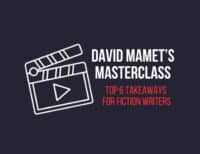
Submit a Comment Cancel reply
Your email address will not be published. Required fields are marked *
Submit Comment
Join over 450,000 readers who are saying YES to practice. You’ll also get a free copy of our eBook 14 Prompts :
Popular Resources
Book Writing Tips & Guides Creativity & Inspiration Tips Writing Prompts Grammar & Vocab Resources Best Book Writing Software ProWritingAid Review Writing Teacher Resources Publisher Rocket Review Scrivener Review Gifts for Writers
Books By Our Writers

You've got it! Just us where to send your guide.
Enter your email to get our free 10-step guide to becoming a writer.
You've got it! Just us where to send your book.
Enter your first name and email to get our free book, 14 Prompts.
Want to Get Published?
Enter your email to get our free interactive checklist to writing and publishing a book.
How to research a historical novel
Hannah kohler, author of the outside lands , offers some advice to anyone writing, or hoping to write, their own historical fiction..

Historical fiction can be a tricky genre to master. If you haven't done your homework it won't feel authentic but, on the other hand, no one wants to read a novel that feels like a school history lesson.
Here Hannah Kohler, author of The Outside Lands , which takes us from 1960s California to Vietnam, offers some advice to anyone writing, or hoping to write, their own historical fiction .
My first novel, The Outside Lands , is set in 1960s California and Vietnam. When I wrote it, I didn't think of it as historical fiction — the period didn't seem remote enough — although novels set more than fifty years in the past are usually defined as historical.
My second novel, Catspaw , is undeniably historical fiction: it is set in the California Gold Rush of 1849. I'm writing it in the British Library, surrounded by the library's vast and extraordinary North American collections. Shelved away in this soaring building are memoirs that will spark plot ideas, diaries that will inspire character voices, photographs that will help me visualize nineteenth-century America.
But if the library is a novelist's wonderland, it can also be a rabbit-hole — a place you can get lost for days at a time, encountering all kinds of marvels but ending up, like Alice, right back where you started. So how do you strike the balance between research and writing? Here are some things I've learned …
Don't write what you know
Write what you love. You'll be spending a lot of time in this particular historical period, with its strange habits, its ways of speaking and dressing, its appetites and peccadilloes. So make sure you're excited at the prospect of living in your chosen period for a couple of years. Your passion will be felt in the energy of your writing.
Don't know it all
Scientists solve problems by writing down the answer first, then conducting research to test their hypothesis. It's a smart and efficient way of getting to an answer in the face of an overwhelming amount of information. The same approach is invaluable in writing in historical fiction. Don't start with research. Establish your characters and narrative, and then be strategic about what you need to find out. Research as you write.
Less is more
Be ruthless about the research you include in your writing. Don't be tempted to show you've done your homework. We live in an age in which most readers have seen enough movies to have a basic set of visual assumptions about what different historical periods looked like. This means you can be sparing in building the historical setting of your novel. Only include historical details that advance your narrative. As for everything else you've learned — just feel it, sitting in your brain, giving you the confidence to write your story.
Sweat the small stuff… later
Whatever historical details you include, if you're aiming for realism, it's worth getting them right. This is particularly important when you're writing about a period that people remember first-hand: if you muddle your Snickers with your Marathon bars, readers will notice.
Even if you're writing about a remote past, accuracy in the detail — hairspray brands, newspaper headlines — helps create a setting that feels authentic. But sweat the small stuff as late possible —preferably when you're editing the final draft. Otherwise you'll never finish the thing.
But don't chase accuracy too hard
You're writing a work of fiction, not an exhaustive historical account. Research for inspiration. Research for authenticity. But don't chase accuracy so relentlessly that it gets in the way of telling your story. Remember you're dealing in fiction, not fact.
Disable your internet; put the books away. Your job is to write; and research can easily become just another way to delay writing. So keep research in its place — which is the thing that will inspire you, the thing that will help you create an authentic rendering of the past, but never the thing itself.
Hannah Kohler is currently the Eccles British Library Writer in Residence.
The Outside Lands
By hannah kohler.
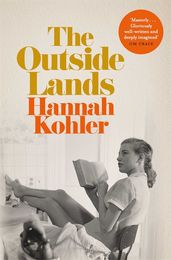
The Outside Lands is the story of people caught in the slipstream of history, how we struggle in the face of loss to build our world, and how easily and with sudden violence it can be swept away. With extraordinary skill and accuracy, Hannah Kohler takes us from 1960s California to Vietnam, capturing what it means to live through historic times. This powerful debut novel announces Kohler as a remarkable new literary talent.
You may also like
Hannah kohler on the books of the vietnam war, the 50 best historical fiction books of all time, summer reads if you like historical fiction.
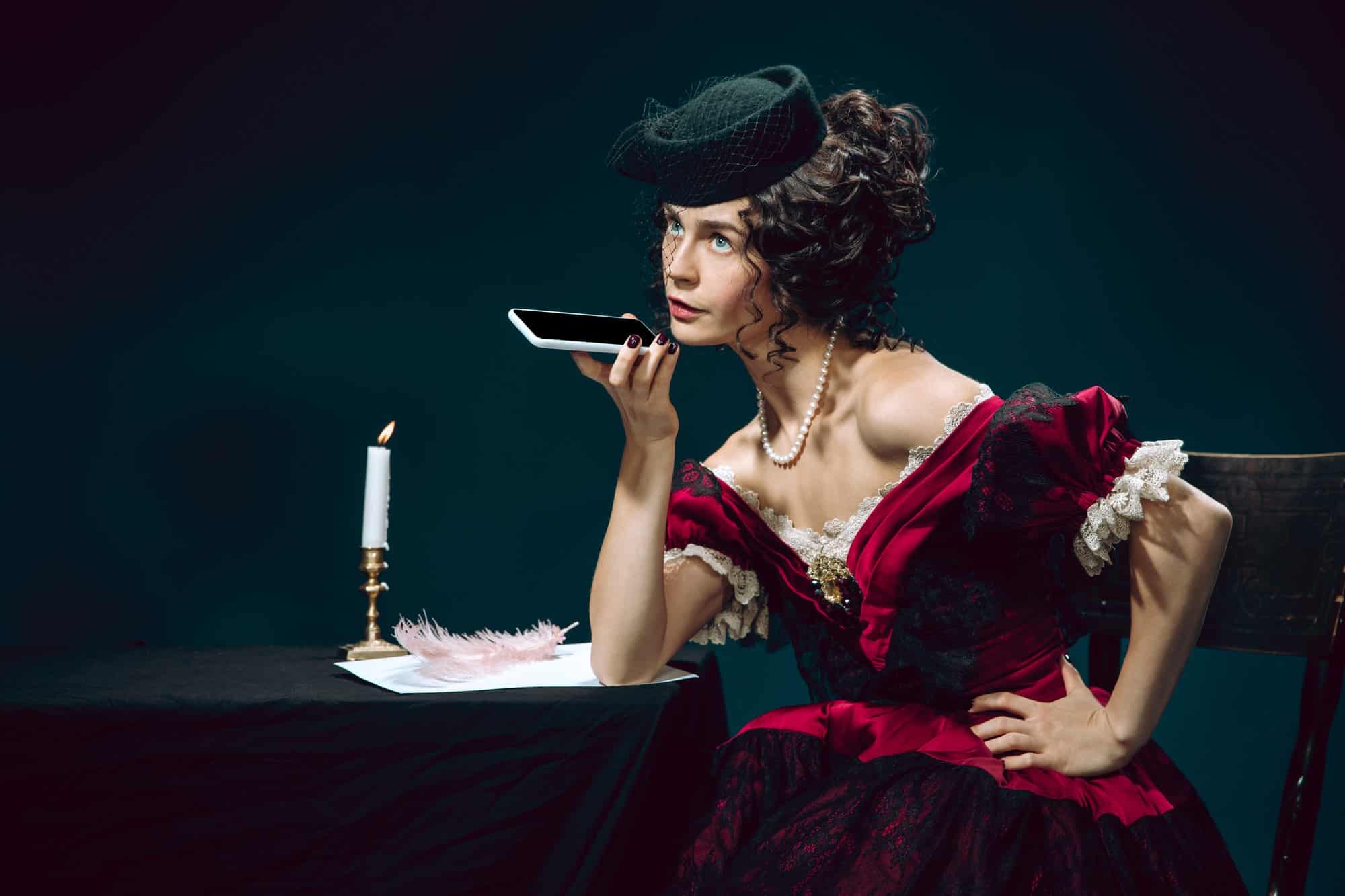
How to effectively research historical fiction
I write a lot of historical fiction. All but one of my book manuscripts is historical, whether that’s set in the 1850s, 1940s, or eep – 1990s. It’s easier to write about a period you’ve lived through, but what do you do when everyone who lived during that time is long gone?
You could just base your historical fiction off what you’ve seen in movies, but that would do a disservice to your writing. Funnily enough, movies are not always historically accurate… So I’ve put together my top tips for how to research historical fiction.
Research helps build the authenticity of your historical fiction, whether that’s a Regency romance or a Victorian crime novel. I’ve found that researching books uncovers facts that have ultimately influenced the outcome of my story.
And while there will be times that you need to research while you’re writing – your character gets into a fight and you want to know a historically accurate rapier or gun ASAP – it’s important to do as much research as you need before you write your book. At a minimum, you should be able to answer all the questions outlined below.
Define your fiction’s limits
Before you start your research, you must identify the location and year/s of your book’s setting. This will help narrow your research.
After defining the limits of your fiction, the basic questions you will need to answer researching any historical novel are:
- What did the locations in my story look like at the time?
- What sort of clothes would my characters wear?
- What foods and drinks were consumed?
- If it’s set in a city, what landmarks were built at the time? Big Ben was still being built in the 1850s, so it will seem funny if it’s in your 1830s novel.
- How would people of the period perceive my character? What class are they? How do they fit in with the rest of society?
- What kind of employment was available? Don’t make assumptions about this. I assumed that early newsrooms were filled with men, but women played an important and documented role in both typesetting and editorial.
- What kinds of rituals and etiquette were observed?
- Are there any social issues I should be aware of that have modern consequences for readers? Things such as slavery, racism, and sexism of the period will bring out contemporary responses for readers. How will you address present-day concerns through the lens of the past?
- Who were the rulers/governors at the time?
- What wars and conflicts was the country/state/city involved with or influenced by?
- If you’re writing a crime novel, what were the procedures for law and order? Was it organised or more informal?
- What kind of transportation was/wasn’t used at the time?
- What technology was/wasn’t available at the time? Be careful to check the dates on inventions, particularly regarding communications and medicine.
- Were there common languages or languages for the elite and poor?
- Is there patter from the period you can use in dialogue?

What if you don’t know when or where your book is set? You might have a general idea of the period you’d like to write in. In that case…
Start broad, dig narrow
The first place you want to start is in general histories. A simple search of your library or favourite search engine for books on the period will turn up a plethora of results. Look for the best reviewed books and start there.
Another way to find the best books on a particular period is to look in bibliographies. What books are referenced again and again by researchers?
Many popular books about the Victorian era rely on Henry Mayhew’s London Labor and the London Poor, one of the first books to document firsthand accounts of poverty in London. It is an absolute must-read for anyone writing in that historic period. Rather than reading ten books which quoted the Mayhew, I just read the Mayhew.
What types of research resources are helpful for historical novelists?
Non-fiction books.
The obvious first place to start is with non-fiction books. The kinds of books that are often useful for filling in historic detail are:
- First-hand experiences and accounts
- Books documenting how people lived in the era
- Niche books relevant to your topic
- Photography and illustration books
- Costume books
- Dictionaries – useful for language
While the library is my first stop when looking for unique books (some of which can be expensive to purchase), the following sites have useful resources:
- Project Gutenberg often has first-hand accounts in the public domain
- Wikimedia Commons is a great resource for imagery from historic periods
- Better World Books, eBay and AbeBooks often have hard to find and ex-library books for a reasonable price
Maps are an invaluable research tool for the novelist, as you can mark them up and trace your character’s route through the city. I use maps a lot in writing fiction, both large printed maps that I mark up, and google maps.

Yes, I’m going to say it. I use Wikipedia to get a general overview of an era…
…but that shouldn’t be the only source of information you reach for. While it’s helpful for outlining the basic facts and characters in a time period, there are far more websites out there dedicated to particular aspects of history. I won’t tell you how to do a google search, because it’s probably how you ended up here.
First-hand documents
First-hand research doesn’t have to be difficult! Museums can provide vast sources of inspiration and ideas for your novel. While you can’t touch the exhibits, you can document your research while you look through a museum. And if you can’t get to a specific museum, many of them have online databases and images of their collections that you can access for free.
A great example of this was when I needed to find images of Wapping and the London Docks in the 1850s. I searched the National Maritime Museum’s archives and discovered sketches that Turner had done of the docks. While it would be too expensive for me to travel to London to see the locations (as much as I want to), I could get a sense of what it was like.
Unless you have a particular interest in a topic or are basing your novel on a real-life figure, it’s unlikely that you’ll need to handle first-hand documents from the period. But if you need to, you can access these texts from many state and national libraries. While there might be strict location and handling requirements on items, many librarians would be keen to help a novelist research their book.
Ask an expert
On that note, if you are writing about a very niche topic, don’t be afraid to ask an expert if you can’t find the information you need. I needed to know something specific about how the postal system worked in the Victorian era, so I emailed the postal museum who were more than happy to help. Experts are often excited to meet someone who is interested in their work.

Visit your location
If you can visit the locations in your book, do! Make sure you take a notebook and jot down your impressions of the location. Think about how your characters would perceive and walk around the space. Take your time to absorb the atmosphere and take photos if permitted.
When I was writing a book based on the legend of Count Dracula, I was lucky enough to visit Transylvania. Not even Bram Stoker got to Romania (he based most of his ideas of Transylvania on a travel book). It’s a place I’ll never forget, and my writing was made richer for having gone there. Place is a powerful inspiration for story.
YouTube Videos
While YouTube is a relatively recent phenomenon, it has a vast amount of historical resources. Need to find out how an old gun works? Someone has made a video on that. Want to see a historical costume in action? Someone has made a video on that. I kid you not – I’ve used YouTube to see how both old cameras and guns worked for my novels.
Document your research
Now you might have all this amazing research, but don’t store it in your head!
Documenting is just as important as researching your book. Make sure you have a good note-taking system. Whether that’s a single paper notebook for all your research or using an online tool like OneNote or Evernote to keep it in one place.
Taking photos are also very helpful for documenting places – just check you’re allowed to in private locations and museums before bringing the camera out.
Integrating your historical research into your fiction
While this topic could be a whole separate blog post on how to include historical details in your fiction, it’s important to integrate your research naturally in your work. While we might get obsessed with say, a certain shoe, if it’s not relevant to the story, you shouldn’t be giving a paragraph of backstory on a shoe.
Likewise, don’t be too obvious about integrating your research into dialogue. We don’t need tour guide characters who say, “And this is Big Ben, which was completed in 1859, and is actually the name of the bell inside the tower, not the tower itself. Now follow my umbrella…” A better way is to have characters comment from their perspective – “Gov, those builders better get on with finishing that tower.”
Follow that damn rabbit
Some people will say not to go down the rabbit hole, but I say follow that rabbit. If you’ve stumbled across an interesting aspect of history that no one has ever written about, and you’re curious, keep going. Chances are that curiosity might spark something new.
I hoped this post has helped you learn more about how to research historical fiction. As always, if you have questions, hit me up in the comments below, and let me know how your research is going!
3 responses to “How to effectively research historical fiction”
Thanks for the helpful article!
Thanks for taking the time to check out my blog 🙂
[…] How to effectively research historical fiction […]
Share your thoughts Cancel reply

ENGL 3025: Writing Historical Fiction: Doing Research for Your Writing
About this guide, pre-research the period and location, create a convincing picture, databases for finding details of the period, databases for researching specific periods, primary texts by period, historical newspaper databases, study secondary sources, sources used - find more tips there, get help with your research, document your sources, who wrote this guide.
This guide is primarily developed in support of the course ENGL 3025: Writing Historical Fiction. It outlines elements of research and provides links to resources and research tips.
While many suggested resources are available online, please note that research for historical fiction may require using print resources, visiting libraries and archives, and conducting personal interviews and research consultations.
- Identify the location and year(s) of your piece setting.
- Look at a variety of resources to immerse yourself in a period/event.
Search Summon
Search tip : Do a keyword search; for example, Berlin Wall
Limit to publications from a certain period
Look at different material types
Search the Library Catalog
Search tips
- September 11 terrorist Attacks, 2001
- March on Washington
- Subject headings may not be intuitive. Start with a keyword search, e.g., "9/11,” and then look at subject headings attached to relevant records. Then browse subject headings
Find personal accounts
Where to find them
Library catalog and suggested databases (scroll down for lists of databases).
- Correspondence
- Reminiscences
- For more results click the OhioLINK button on the results screen
Study details of the period
Look for clothes, jewelry, transportation, architecture, etc.in paintings, photographs, documentaries, etc.
- Library catalog
Search tip: To find images in the library catalog use the following keywords:
- Pictorial works
- Documentary photography
- Digital collections of museums
- For pieces set in Cincinnati: Digital Library of the Public Library of Cincinnati and Hamiltion County
Look at books/periodicals/media
created at the time of your story.
Where to find books
- Google Books
- Project Gutenberg
Tip : In Project Gutenberg explore bookshelves, e.g., US Civil War )
Where to find newspapers
Study historical maps
See " Digital Maps " in the Geography & Environmental Science Resource Guide. May of the maps listed there are historical.
Old Maps Online (multiple countries)
Some databases for researching specific periods include maps (click on the Information button for descriptions)
Research language
"...certain aspects of language can detract from the seeming authenticity of the characters’ words, and these include both archaic or “difficult” language, and anachronistic language or ideas, both of which, in their different ways, can throw the reader out of the illusion the novelist is trying to convey. " " Ancient or modern? Language in historical fiction " by Carolyn Hughes/
Helpful resources
See also “Find personal accounts” and “Look at books/media created at the time of your story.”
Verify information
Check dates, facts, etc.
Wikipedia is great for this! Libraries have even more resources.
- Online Reference Shelf
The Library provides networked access to many more full-text, primary source databases than can be listed here. Others may be located through the Library Catalog and Databases , which contains an alphabetical list of online resources related to Language and Literature.
All Periods/Long Full-Text Coverage
Middle english, early modern.
19th Century
Modern and contemporary.
- Newspapers/Research Databases (Public Library of Cincinnati and Hamilton County
Secondary sources include non-fiction accounts, biographies, academic papers, interviews with historians and experts.
Follow academic discourse related to your historical period or event for different angles, recent findings, and bibliographies.
Secondary sources will also help you identify social issues of the period.
Suggested databases
" Helpful Research Sources for Historical Fiction Writers ." Write to Done.
"How to Do Historical Research for a Novel by Claudia Merrill.
"How to effectively research historical fiction" by Kat Clay.
" Historical Fiction: 7 Elements of Research" by M.K. Todd. Now Novel blog.
- All Online Research Guides
- Ask a Librarian (Public Library of Cincinnati and Hamilton Coutny)

- Last Updated: Mar 11, 2024 11:55 AM
- URL: https://guides.libraries.uc.edu/histfiction
University of Cincinnati Libraries
PO Box 210033 Cincinnati, Ohio 45221-0033
Phone: 513-556-1424
Contact Us | Staff Directory
University of Cincinnati
Alerts | Clery and HEOA Notice | Notice of Non-Discrimination | eAccessibility Concern | Privacy Statement | Copyright Information
© 2021 University of Cincinnati
Word Smitten
No products in the cart.

Mastering the Art of How to Write Historical Fiction: A Comprehensive Guide
Crafting historical fiction can often feel like wandering through a thick forest. It’s comforting to know that the struggle is universal; many of us have grappled with the delicate dance between weaving real history and letting our imaginations soar.
Drawing on the wisdom gleaned from 64 esteemed authors, this guide lays out practical steps and strategies to navigate the complexities of historical fiction with ease. Are you ready to embark on this exhilarating trek?.
Table of Contents
Key Takeaways
- Research deeply to make your historical fiction feel real. You need to look at old newspapers, visit museums, and talk with experts.
- Take notes while researching and writing. This helps keep track of all the details you find.
- Mix true history with made – up stories carefully. Your book should teach readers about the past but also entertain them.
- Create characters who fit into the historical time but have their own dreams and problems.
- Make your settings rich with details like what people wore or how they lived back then. Use sources like letters or photos from that time for accuracy.
How to Write Historical Fiction in 10 Steps
1. Always conduct thorough research before starting to write historical fiction.
2. Take detailed notes as you progress through your research and writing process.
Always be researching
I spend a lot of time digging into the past to make my historical fiction feel real. Every detail needs to be accurate, from big events down to what people ate for breakfast. This means hitting the books, browsing through old newspapers online, and sometimes even visiting places to get a sense of the setting.
It’s all about getting those facts right because they’re crucial for crafting stories that readers can dive into without stumbling over inaccuracies.
For me, researching is like gathering pieces for a puzzle. I look everywhere—museums for artifacts, libraries for records, and expert interviews to fill in gaps. My goal is always clear: ensure every piece fits perfectly within my fictional world while maintaining historical accuracy .
This constant search keeps my storytelling vibrant and believable, helping me master the art of writing compelling historical fiction that engages readers from start to finish.
Take notes as you go
When writing historical fiction, taking notes as you go is crucial for keeping track of historical details and plot developments . This helps in ensuring accuracy and consistency throughout the story.
It’s important to jot down key historical facts , character traits , and significant events that will shape the narrative. By doing this, it becomes easier to weave a compelling and historically accurate storyline.
Furthermore, these notes aid in avoiding inconsistencies or anachronisms within the narrative. As a self-publisher focused on mastering historical fiction writing, meticulous note-taking will support your creative process while maintaining authenticity.
Strike a balance between history and fiction
As we seek to strike a balance between history and fiction, it’s essential to intertwine accurate historical facts with compelling fictional elements . By carefully weaving historical details into our narratives, we can transport readers back in time while also engaging their imagination with the intricacies of fictional storytelling.
This fusion creates a captivating experience for readers, allowing them to connect with the past while being immersed in a richly imagined world.
Crafting historical fiction involves blending fact and fiction seamlessly , drawing readers into an enthralling narrative that captures the essence of a specific era. It is through this harmonious blend that the magic of historical fiction truly comes alive – where historical accuracy meets evocative storytelling , creating an immersive reading experience sought after by enthusiasts of this genre.
Consider reader expectations
When writing historical fiction, it’s essential to understand reader expectations. Historical fiction readers seek a captivating story that immerses them in the past while being historically accurate .
They look for well-developed characters who reflect the time period and a vivid, authentic setting . It’s crucial to balance historical facts with compelling storytelling to engage and satisfy the audience’s thirst for knowledge about the past.
By meeting these expectations, writers can create an unforgettable experience for readers immersed in historical fiction.
Develop complex and engaging characters
When it comes to writing historical fiction, developing complex and engaging characters is essential. By creating multi-dimensional individuals who breathe life into the story, you can transport readers to another time period or setting, making the narrative more vivid and captivating.
Crafting characters with emotions, desires, flaws, and strengths tailored towards a specific historical context underpins the essence of this genre. Not only does it make history relatable but also enhances the overall reading experience .
Create a rich and historically accurate setting
Crafting a vivid and historically precise backdrop is key to immersing readers in the world of your historical fiction. Use descriptive language to depict the sights, sounds, and ambiance of the time period.
Infuse authentic details such as clothing, architecture, and daily life activities to transport readers back in time to experience the setting firsthand.
Engage with primary sources like letters, diaries, or photographs from the era you are writing about. This can add richness and depth to your depiction of the historical setting while grounding your narrative in authenticity .
Build a strong plot
Crafting a compelling plot is the heartbeat of historical fiction, driving readers through an enticing journey. We must ensure that historical accuracy intertwines seamlessly with thrilling fictional elements to keep readers thoroughly engaged.
Tension and conflict should captivate the audience, much like history itself weaves drama into our collective past. Characters’ actions and decisions should be shaped by the period’s social norms and challenges , creating an authentic experience for readers.
As we delve into constructing a strong plot, incorporating historically accurate events and dilemmas can further enrich the narrative, transporting readers to another time.
Diving deftly into crafting a potent storyline requires meticulous attention to detail while weaving together real historical occurrences with captivating twists tailored to engage modern audiences .
Use effective descriptive language
When writing historical fiction, use vivid and evocative language to bring the past to life for readers. Describe the sights, sounds, and smells of historical settings in order to immerse your audience in a different time period.
By using descriptive language that paints a clear picture, you can transport readers back in time and make the historical era feel real and tangible. This approach will help create an engaging reading experience that captures the essence of history while weaving it into captivating fictional narratives .

Edit and revise thoroughly
To ensure the quality of your historical fiction, I recommend thoroughly editing and revising your work. Go through each step carefully with a fresh perspective to refine the plot, characters, and setting.
Make sure that your language is descriptive and engaging while maintaining historical accuracy in every detail. Take time to research any areas needing clarification or improvement, addressing reader expectations along the way.
This process will help you create a captivating piece that truly captures the essence of historical storytelling and engages readers.
Tips for Researching Historical Fiction
When researching historical fiction, conduct thorough and diverse research to build a rich foundation of knowledge. Utilize top online research resources and follow useful tips for finding the right balance between accuracy and creative license.
Top online research resources
When it comes to researching historical fiction, it’s essential to have access to reliable online resources . Here are a few excellent resources to assist in your historical fiction writing journey:
- Google Books : This resource offers a vast collection of digitized books from different time periods, providing valuable insights into historical events and settings.
- JSTOR : A digital library that offers access to thousands of academic journals, books, and primary sources covering various historical topics.
- Library of Congress Digital Collections : Explore photographs, maps, manuscripts, and other primary sources related to U.S. history through this extensive online archive.
- Europeana : This platform provides access to millions of items from European museums, libraries, archives, and galleries, offering diverse perspectives on European history.
- British Library’s Online Catalogue : Access a wealth of digitized resources encompassing literature, art, history, and culture from the British Library’s extensive collections.
- National Archives : Delve into official records like census data, military records, and governmental documents that can enrich your understanding of specific historical periods or events.
As you navigate through these invaluable resources for historical research,
let’s delve into the next section on “Useful research tips.”
Useful research tips
When looking for inspiration and information, these tips can guide you through the process of researching historical fiction:
- Start by delving into primary sources like diaries, letters, and newspapers to gain firsthand perspectives from the time period.
- Engage with experts in history or specific time periods to ensure accuracy in your writing.
- Utilize historical databases and archives to access authentic documents and records from the past.
- Immerse yourself in historical places and artifacts to capture the essence of the era.
- Connect with local historians or visit historical societies for additional insights and details about your chosen time period.
- Delve into scholarly articles and books that provide a deep understanding of the cultural, social, and political aspects of the historical period you are exploring.
- Consider attending historical reenactments or visiting museums to visually experience the setting of your story.
Finding a balance between accuracy and creative license
To write compelling historical fiction, it is vital to balance accuracy and creative freedom. This requires meticulous fact-checking to ensure the historical backdrop is authentic while allowing room for imaginative storytelling.
Engaging characters and captivating plots can only thrive when built upon a solid foundation of historical truth intertwined with fictional elements. This delicate equilibrium sustains the reader’s interest and cultivates an immersive experience, essential for crafting top-tier historical narratives.
Crafting enthralling tales from the annals of history necessitates a delicate fusion of precise details and artistic liberties. Impeccable research forms the bedrock for weaving believable stories set in bygone eras, conjuring up vivid worlds that captivate audiences seeking escapism within historically accurate realms.
Tips for Blending Fact and Fiction
Blending fact and fiction in historical writing requires adept storytelling skills. Dive into the tips and techniques of this captivating craft.
Understanding the genre
Historical fiction is about creating imagined stories set within real historical contexts . Crafting compelling narratives in another time period requires meticulous attention to historical accuracy while weaving a captivating fictional tale .
As writers, we must blend fact and fiction seamlessly, using historical facts as a foundation to build an engaging world for our readers. This underpins the complexities of the genre, seeking more than just storytelling; it’s about unlocking the secrets of history through robust and immersive narratives that transport readers back in time.
Creating imagined stories within real historical contexts
Crafting imagined stories within real historical contexts requires a blend of accuracy and creativity . We must ensure that the characters, setting, and plot are in line with the historical period while weaving compelling fictional narratives .
This interplay creates an immersive experience for readers, offering them a window into another time while being captivated by our storytelling prowess. Getting this balance right is essential to crafting engaging historical fiction that resonates with our audience and stands the test of time.
By blending fact and fiction seamlessly , we create a world that feels authentic yet enthralling, drawing readers into a bygone era through our vivid storytelling techniques . It’s about harnessing the power of history to breathe life into our imaginative tales, leaving readers eager for more journeys through time as they embrace the magic woven into each page.
Keeping readers engaged and interested
Engage readers with captivating characters , dynamic plots , and vivid settings . Create a balance between historical accuracy and compelling storytelling to keep them hooked. Use descriptive language that transports them to another time period while maintaining a fast-paced narrative.
Involving readers in the lives of your characters will ensure they stay invested in your historical fiction journey.
Craft narratives that delve into real historical events and personalities while adding a unique fictional twist. Infuse suspense and emotion into the plot to maintain reader interest throughout the story.
Writing historical fiction is like embarking on a time-travel adventure, guiding readers through the corridors of the past with stories that breathe life into long-gone eras. Achieving this delicate balance between fact and fiction demands not just talent but also a rigorous approach to research, character development, plot crafting, and setting creation.
It’s a journey where every step counts toward making history leap off the page and into the hearts of readers.
Dr. Elizabeth Rivera stands out as an authority in the field of historical fiction writing. With her Ph.D. in Historical Studies and over two decades of experience teaching creative writing, Dr.
Rivera has published multiple acclaimed novels set across various periods, showcasing her ability to weave factual accuracy with compelling narratives. She regularly contributes to academic journals on effective research methods in historical fiction and nurtures new writers through workshops dedicated to honing their craft according to high scholarly standards.
Dr. Rivera emphasizes that mastering these ten steps outlined provides writers with a solid foundation for creating enthralling tales that respect historical truth while engaging modern imaginations.
She notes how blending diligent research with creativity enables authors to construct believable worlds where characters feel both authentic and relatable.
In discussing ethics and transparency, Dr. Rivera underscores the responsibility authors bear when merging reality with invention; they must strive for authenticity in depicting events or lifestyles from another era without distorting documented facts merely for dramatic effect—highlighting how ethical considerations inform every stage of writing historical fiction.
For aspiring novelists eager to integrate these practices into their daily routine, Dr. Rivera recommends setting regular times for focused research alongside creative brainstorming sessions intended for developing storylines within historically accurate settings —a practice ensuring both productivity and adherence to factual integrity.
Her evaluation presents a balanced view: while mastering historical fiction offers unique challenges such as intense preparatory work and strict commitment to detail accuracy; it equally promises immense satisfaction by enabling stories that can enlighten contemporary issues through the lens of past experiences—an aspect few genres can claim similarly.
Ultimately, Dr. Elizabeth Rivera champions “Mastering the Art of How to Write Historical Fiction” as invaluable guidance for any writer committed to authentically representing our shared human history through narrative artistry —declaring its comprehensive approach both essential and transformative for those seeking excellence in this literary domain.

Victoria Sterling is a seasoned author and publishing consultant dedicated to empowering writers on their journey to success. With over two decades of experience in the publishing industry, Victoria provides invaluable guidance and support to writers, helping them navigate the complexities of publishing and achieve their literary dreams. Through her expertise and passion for storytelling, Victoria inspires writers to unleash their creativity and thrive in the ever-evolving world of publishing.
Similar Posts

Mastering the Art of How to Sell a Screenplay: Proven Strategies and Tips
Navigating the world of screenplay sales can feel like an uphill battle, one I’m intimately familiar with from my own…

The Ultimate Guide to Self-Publishing Children’s Books: Everything You Need to Know for Self Publishing Children’s Book
Embarking on the journey of self-publishing a children’s book might seem daunting at first glance. Believe me, I completely understand…

Exploring the Copyright Protection of Fictional Characters: What You Need to Know About Copyright Characters
Ever find yourself lying awake at night, fretting over the idea of someone else claiming your original fictional character as…

Exploring Kindle MatchBook: How Authors and Publishers Can Boost Book Sales
Looking for a way to kick your book sales up a notch? You’re not alone. After diving deep into the…

What is a Writer: Understanding the Role and Definition of a Writer
[Revised Content] Ever found yourself pondering over the essence of being a writer? You’re in good company; I too have…

Maximizing Efficiency: The Advantages of Short Run Digital Printing
Struggling to keep up with the rapid pace of market demands and your printing needs? You’re certainly not the only…
How to organize research for your novel

Follow this step-by-step guide to learn the modern process of organizing research in Milanote, a free tool used by top creatives.
How to organize your research in 7 easy steps
Whether you're writing a sci-fi thriller or historical fiction, research is a crucial step in the early writing process. It's a springboard for new ideas and can add substance and authenticity to your story. As author Robert McKee says "when you do enough research, the story almost writes itself. Lines of development spring loose and you'll have choices galore."
But collecting research can be messy. It's often scattered between emails, notes, documents, and even photos on your phone making it hard to see the full picture. When you bring your research into one place and see things side-by-side, new ideas and perspectives start to emerge.
In this guide, you'll learn the modern approach to collecting and organizing research for your novel using Milanote. Remember, the creative process is non-linear, so you may find yourself moving back and forth between the steps as you go.
1. First, add any existing notes
You probably know a lot about your chosen topic or location already. Start by getting the known facts and knowledge out of your head. Even if these topics seem obvious to you, they can serve as a bridge to the rest of your research. You might include facts about the location, period, fashion or events that take place in your story.

Create a new board to collect your research.
Create a new board
Drag a board out from the toolbar. Give it a name, then double click to open it.
Add a note to capture your existing knowledge on the topic.
Drag a note card onto your board
Start typing then use the formatting tools in the left hand toolbar.
2. Save links to articles & news
Wikipedia, blogs, and news websites are a goldmine for researchers. It's here you'll find historical events and records, data, and opinions about your topic. We're in the 'collecting' phase so just save links to any relevant information you stumble across. You can return and read the details at a later stage.

Drag a link card onto your board to save a website.
Install the Milanote Web Clipper
Save websites and articles straight to your board.
Save content from the web
With the Web Clipper installed, save a website, image or text. Choose the destination in Milanote. Return to your board and find the content in the "Unsorted" column on the right.
3. Save quotes & data
Quotes are a great way to add credibility and bring personality to your topic. They're also a handy source of inspiration for character development, especially if you're trying to match the language used in past periods. Remember to keep the source of the quote in case you need to back it up.

Add a note to capture a quote.
4. Collect video & audio
Video and movie clips can help you understand a mood or feeling in a way that words sometimes can't. Try searching for your topic or era on Vimeo , or Youtube . Podcasts are another great reference. Find conversations about your topic on Spotify or any podcast platform and add them into the mix.

Embed Youtube videos or audio in a board.
Embed Youtube videos or audio tracks in a board
Copy the share link from Youtube, Vimeo, Soundcloud or many other services. Drag a link card onto your board, paste your link and press enter.
5. Collect important images
Sometimes the quickest way to understand a topic is with an image. They can transport you to another time or place and can help you describe things in much more detail. They're also easier to scan when you return to your research. Try saving images from Google Images , Pinterest , or Milanote's built-in image library.

Use the built-in image library.
Use the built-in image library
Search over 500,000 beautiful photos powered by Unsplash then drag images straight onto your board.
Save images from other websites straight to your board.
Roll over an image (or highlight text), click Save, then choose the destination in Milanote. Return to your board and find the content in the "Unsorted" column on the right.
Allow yourself the time to explore every corner of your topic. As author A.S. Byatt says "the more research you do, the more at ease you are in the world you're writing about. It doesn't encumber you, it makes you free".
6. Collect research on the go
You never know where or when you'll find inspiration—it could strike you in the shower, or as you're strolling the aisles of the grocery store. So make sure you have an easy way to capture things on the go. As creative director Grace Coddington said, "Always keep your eyes open. Keep watching. Because whatever you see can inspire you."

Download the Milanote mobile app
Save photos straight to your Research board.
Take photos on the go
Shoot or upload photos directly to your board. When you return to a bigger screen you'll find them in the "Unsorted" column of the board.
7. Connect the dots
Now that you have all your research in one place, it's time to start drawing insights and conclusions. Laying out your notes side-by-side is the best way to do this. You might see how a quote from an interviewee adds a personal touch to some data you discovered earlier. This is the part of the process where you turn a collection of disparate information into your unique perspective on the topic.

That's a great start!
Research is an ongoing process and you'll probably continue learning about your topic throughout your writing journey. Reference your research as you go to add a unique perspective to your story. Use the template below to start your research or read our full guide on how to plan a novel .

Start your research
Get started for free with one of Milanote's beautiful templates.
Sign up for free with no time limit

17 Questions to Ask When Researching for Your Novel
- Facebook Data not found. Please check your user ID. Twitter You currently have access to a subset of Twitter API v2 endpoints and limited v1.1 endpoints (e.g. media post, oauth) only. If you need access to this endpoint, you may need a different access level. You can learn more here: https://developer.twitter.com/en/portal/product Instagram Please check your username. Pinterest 234
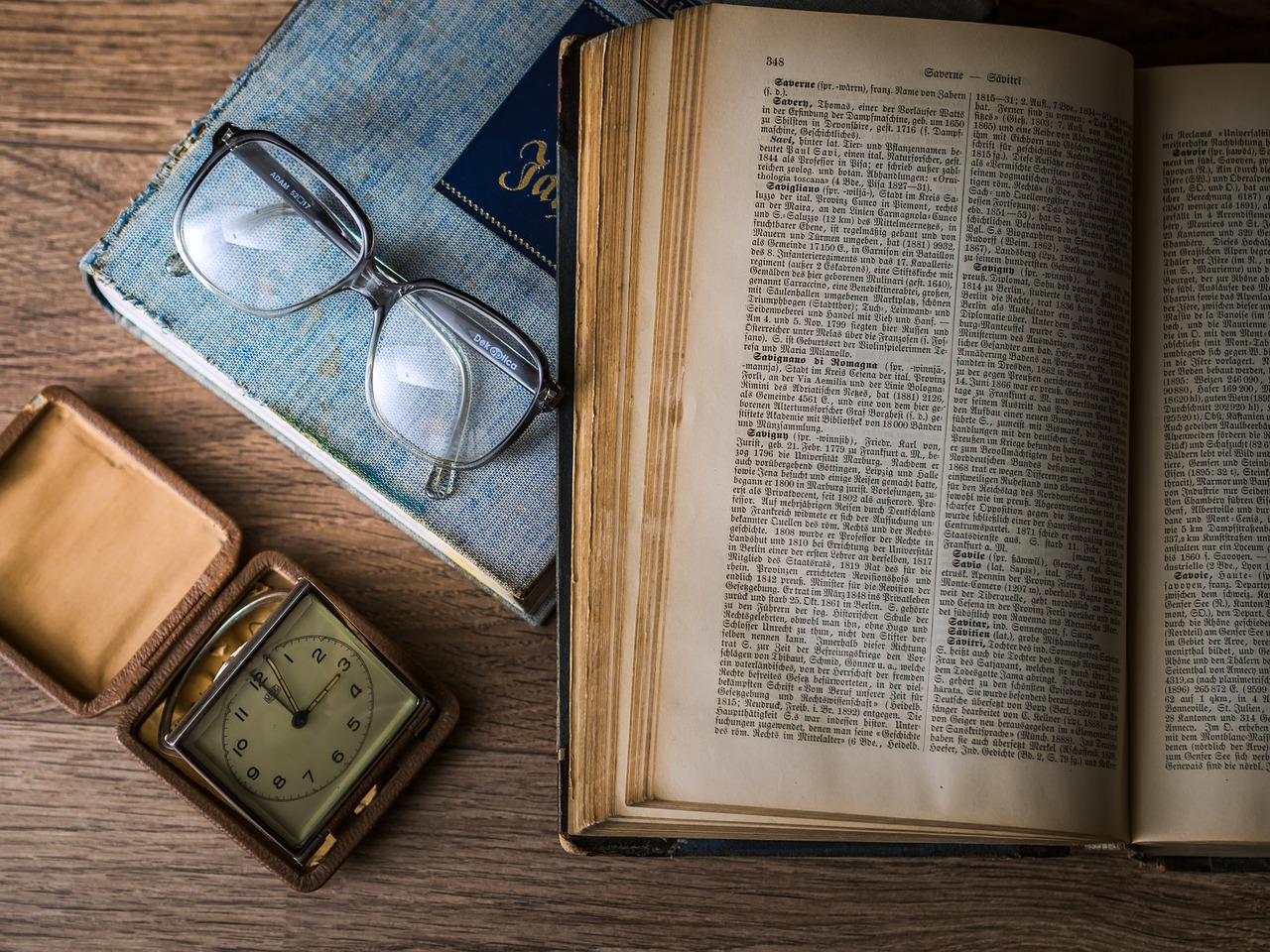
by Sarah Sundin
When I started writing my first World War II novel, I thought I just needed to read a history book, find some cute outfits for my heroine, and have her hum a popular tune.
You may now stop laughing.
Those initial research questions ended up raising more questions. I fell in love with the era and longed to bring it alive with thorough research.
Here are seventeen questions to ask when conducting research for historical fiction. Many are also useful for contemporary novels and when building a story world for fantasy or science fiction. You will not need deep research in every area, but you should be aware of them.
- Historical events You need to know the events occurring in your era. Even if your character isn’t directly involved, she will be affected by them. Be familiar with the preceding era too.
- Setting in historical context You may know your setting now—but what was it like then? Towns grow and shrink, businesses and streets change, ethnic groups come and go.
- Schooling What was the literacy level? Who went to school and for how long? What did they study? If your character breaks the mold (the peasant who reads), how did this happen?
- Occupation Although I’m a pharmacist, writing about a pharmacist in WWII required research. How much training was required? What were the daily routines, tools, and terminology used, outfits worn? How was the occupation perceived by others?
- Community Life What clubs and volunteer organizations were popular? What were race relations like? Class relations?
- Religious Life How did religion affect personal lives and the community? What denominations were in the region? What was the culture in the church—dress, order of service, behavior? Watch out for modern views here.
- Names Research common names in that era and region. If you must use something uncommon, justify it—and have other characters react appropriately. Also research customs of address (“Mrs. Smith” or “Mary”). In many cultures, only intimate friends used your first name.
- Housing What were homes like? Floor plans, heating, lighting, plumbing? What were the standards of cleanliness? What about wall coverings and furniture? What colors, prints, and styles were popular?
- Home Life What were the roles of men, women, and children? What were the rites of courtship and marriage? Views on child rearing? How about routines for cleaning and laundry?
- Food What recipes and ingredients were used? How was food prepared? Where and when were meals eaten and how (manners, dishes)?
- Transportation How did people travel? Look into the specifics on wagons, carriages, trains, automobiles, planes. What was the route, how long did it take, and what was the travel experience like?
- Fashion Most historical writers adore this area. What were the distinctions between day and evening clothing, formal and informal? How about shoes, hats, gloves, jewelry, hairstyles, makeup? Don’t forget to clothe the men and children too!
- Communication How did people communicate over long distances? How long did letters take and how were they delivered? Did they have telegrams or telephones—if so, how were they used?
- Media How was news received? By couriers, newspapers, radio, movie newsreels, TV? How long did it take for people to learn about an event?
- Entertainment How did they spend free time? Music, books, magazines, plays, sports, dancing, games? Did people enjoy certain forms of entertainment—or shun others?
- Health Care Your characters get sick and injured, don’t they? Good. How will you treat them? Who will treat them and where? What were common diseases? Did they understand the relationship between germs and disease?
- Justice Laws change, so be familiar with laws concerning crimes committed by or against your characters. Also understand the law enforcement, court, and prison systems.
Don’t get overwhelmed or buried in research. Remember, story rules. Let the story guide your research, and let research enrich your story. Your readers will love it.
Originally published by FaithWriters, October 8, 2012, http://faithwriters.com/blog/2012/10/08/historical-research-seventeen-questions/ .

Click here for more information about the Mount Hermon Christian Writers Conference.

Update from the Advancement Team!

Velocity Bike Parks / Felton Meadow Project Draft EIR Publishing Soon!
Fantastic list of questions!!! Great stuff!!!
Thanks, Peter!
Great list of questions, Sarah! I’ll have to keep it handy. Thank you! 🙂
Thanks, Angela! I’m glad it’s useful.
Very pertinent topics. Under Transportation, I’d include animal use & care (maybe pets, too)
Under Home life, what was permissible conversation; any taboos? I suppose courtship & marriage rites include sexual more’s.
Perhaps some of this falls under Community life. And science progress of the era under Occupation.
So much to consider. Thanks for the help.
Thanks, B.D.! Great additions – I had a word-count limitation 🙂
More Than Skin Deep: Getting to Know Your Characters from the Outside In
Getting started with novellas, a writer’s sabbath in a 24/7 world.
Every product was carefully curated by an Esquire editor. We may earn a commission from these links.
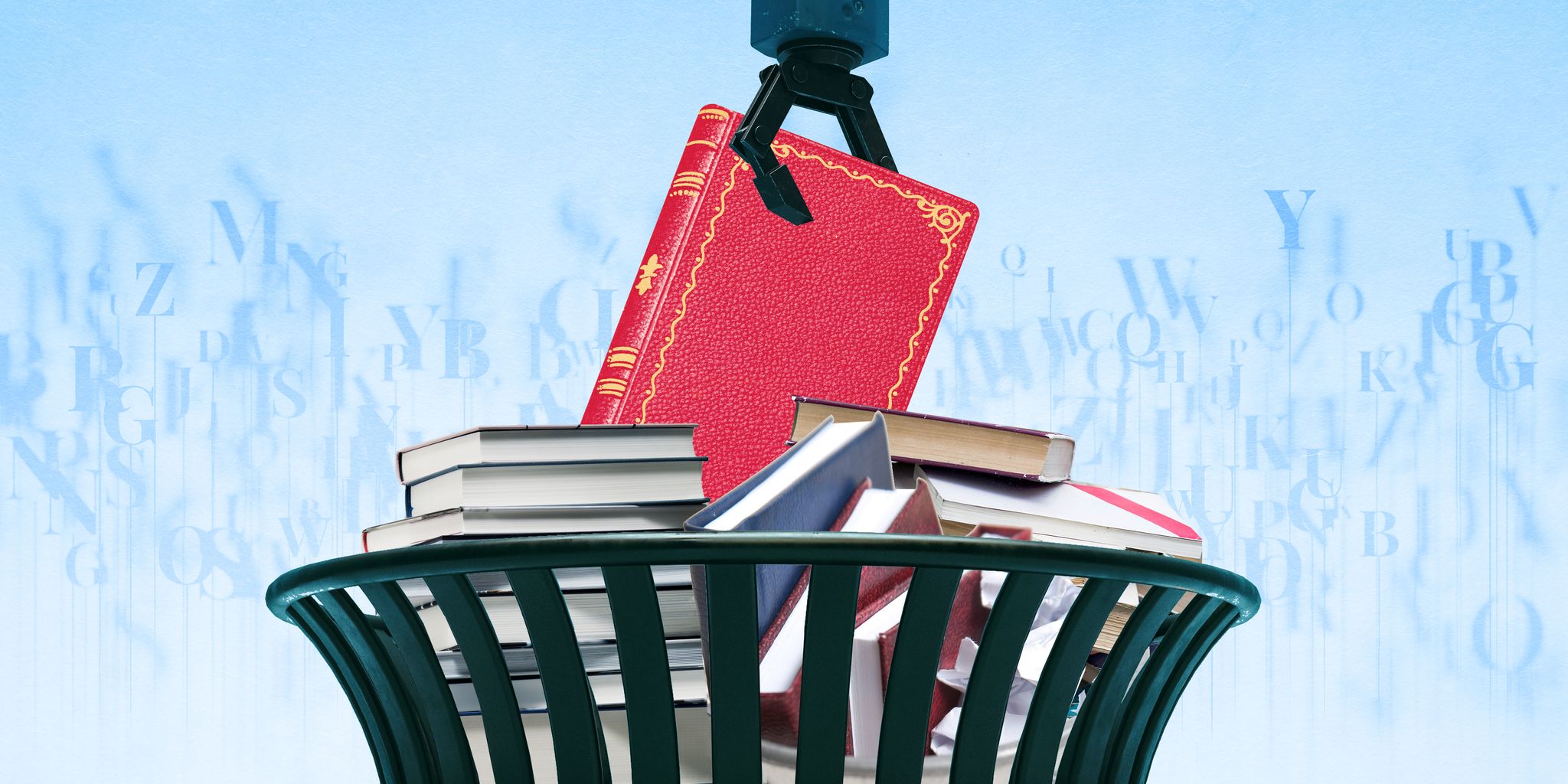
It's Time to Rewrite the Rules of Historical Fiction
Research has long been a backbone of the genre. But beyond the textbooks, there's a whole world of family stories that have not yet become history. They deserve their place in fiction, too.
When you write a historical novel, one of the most common questions you get asked is, how did you research your book? How, readers and writers alike ask, did you learn about the time you were writing about? Did you visit the places you wrote about? Did you conduct mountains of interviews with sobbing survivors? Did you pore through grainy archival footage to find little factoids no one had written about while locked in the bowels of library basements? There is a curious, almost voyeuristic desire to peer into an author’s process. Historical fiction is lived experience, often traumatic, made legible and digestible by the novelist, and people want to know what kind of instruments the author used to excavate said experiences. They want to see the way the pudding is made; they want to understand the ways you stitched the broken shards of history together.
Now that I’m publishing my first novel—a work of historical fiction set in 1930s and 1940s colonized Malaysia, called The Storm We Made , about an unlikely female spy and the impact of her actions on her three children—I’m facing familiar questions about my research process. The questions seem innocuous enough, and well within the realm of reasonable questions to ask of an author of historical fiction. Friends and well-meaning readers want to know which authors’ research processes I mirrored, whose methods I preferred, whose I found cumbersome. An easy question, a throwaway—something I should have no problem answering. They want to visualize my process. Did I scour old Malaysian newspapers, stain my fingers black? Did I lock myself up studying ancient and fragile tapes to understand what people wore at the time? Did I interview thousands of survivors? And even though it seems simple enough to answer, I admit—I am defensive, crushed by the specificity of their questions, terrified to confront the very simple truth.
Because the answer, I’m afraid to whisper, is I did none of those things.
Six months ago, my UK publisher invited me to speak about my book at events in London and Wales to drum up excitement. My first event ever was at a well-known festival, where typically 200,000 people would attend about ten days of programming consisting of book-related panels, speeches, parties, and interviews. At the signing line, my first ever, where I was signing advance copies of my book, a woman came up to the table. I remember very little about her except that her nails were painted a beautiful forest green. She held out her early copy for me to sign.
“Did you ever go to the labor camp from your novel?” she asked, her green nails tapping against the plastic signing table.
She was referring to the labor camp at Kanchanaburi on the border of Thailand and Burma, made famous by the movie Bridge Over River Kwai. It was at this very labor camp that I placed one of my main characters, a teenage boy who had never faced any hardship before his stint at the camp. Documented history indicates that at this camp, nearly 300,000 Southeast Asian civilians and Allied prisoners of war were subjected to inhumane labor conditions. At least 100,000 people died of starvation, exposure, and torture.
“Because I did,” she continued.
She told me that a few years ago, she had gone on a multi-day tour where she stayed in a camp and visited Hellfire Pass, a section of the railway that gets its name from scenes of emaciated prisoners laboring to build it by torchlight, in what looked like an imagined scene from hell. As part of the tour, she paid her respects to monks at a temple erected nearby, and she reflected on the unfortunate history of the land she was standing on.
“I can’t believe you didn’t go!” she said. “You should go sometime. It’s an experience.”

As she walked away from me clutching my book, my first instinct was derision. Ugh, I thought. Yet another tourist marching around death monuments to fulfill some morbid sense of achievement. I imagined her green fingernails drumming against the commemorative plaque of death as she exulted in her sightseeing achievement.
But later, I found myself filled with doubt. Had I missed a crucial opportunity for research? I had written a whole character who lived in a labor camp, who socialized with other boys like him, who endured the torture of adolescence while being tortured. My mind had chided the woman with the green fingernails as disrespectful, someone who reveled in her ignorance. But in fact, was I the one who, in not pressing my feet into the dirt that once housed the desperation of hundreds of thousands of men, the one who was thoughtless and disrespectful of the dead, and the survivors?
The first kernel of my book was written in a strange regurgitation. At the end of my first semester of graduate school in 2019, in a class led by the novelist Marie-Helene Bertino, she assigned us a final project—to write a short story based on a prompt.
“Write about someone who does something in a loop, repetitive. Give it stakes.”
I am ashamed to say I was not particularly diligent about this project. The semester was ending and I was ready to be done, plus in grad school everyone got As, so long as the assignments were turned in. I sat down to write, ready to cobble a few scenes together and finish my semester. Instead, five thousand words fell out of me in a two-day fever. I wrote about a teenage girl who had to run through a series of repeated and increasingly dangerous checkpoints during a war to get home before curfew. As she runs, desperate to make it home, she recalls the many difficult moments during the war that had gotten her to this point, praying that she would make it home before soldiers stormed the streets.
Before this assignment, most of my stories took place either contemporarily or in the 90s and early 2000s, all familiar timeframes to me. This was different. I remember being both relieved and tearful after I finished this story. I remember my voice shaking as I read the first paragraph aloud in class. This emotion confused me; I was certainly not alive during WWII, and these were not my recollections. What I had written, in my two-day fever was a scrapbook of stories my grandmother had told me about her life during the Japanese Occupation of Malaya—stories I had clearly internalized, stories that had been gestating in me for years, waiting for the right impetus to make themselves felt. This was the first etching of what has become The Storm We Made , a fever dream of lore that had lived inside me, remembered.
Can memory be research? More importantly, can secondary memory, stories passed down through time, unreliable, malleable—can these stories be considered research? Before the pandemic, when I went home to Malaysia, my then 90+-year-old grandmother would hand me a mug of Lipton tea and tell me the same three stories about her experience surviving the Japanese Occupation of Malaysia during WWII. She would talk about how she was almost killed by an airstrike, about a kind Japanese man who worked at the railway and sometimes secured her family extra food coupons, and about her brother who, while conscripted to a labor camp, was caged in a chicken coop for a year. But each retelling changed a little, and the details were switched—was it only her brother in the chicken coop or was he stuck in there with others? Was it an airstrike or a burning building? Was the Japanese man an administrator or a tutor? Oral histories, as evidenced by the spottiness of my grandmother’s memories, can be unreliable.
.css-f6drgc:before{margin:-0.99rem auto 0 -1.33rem;left:50%;width:2.1875rem;border:0.3125rem solid #FF3A30;height:2.1875rem;content:'';display:block;position:absolute;border-radius:100%;} .css-1aglugu{font-family:Lausanne,Lausanne-fallback,Lausanne-roboto,Lausanne-local,Arial,sans-serif;font-size:1.625rem;line-height:1.2;margin:0rem;}@media(max-width: 48rem){.css-1aglugu{font-size:1.75rem;line-height:1.2;}}@media(min-width: 64rem){.css-1aglugu{font-size:2.375rem;line-height:1.2;}}.css-1aglugu b,.css-1aglugu strong{font-family:inherit;font-weight:bold;}.css-1aglugu em,.css-1aglugu i{font-style:italic;font-family:inherit;}.css-1aglugu:before{content:'"';display:block;padding:0.3125rem 0.875rem 0 0;font-size:3.5rem;line-height:0.8;font-style:italic;font-family:Lausanne,Lausanne-fallback,Lausanne-styleitalic-roboto,Lausanne-styleitalic-local,Arial,sans-serif;} Can memory be research?
Kali Fajardo-Anstine, in her remarkable essay, “ On Roots and Research ,” writes about how in college, she was afraid to contradict her white professor, who read from a textbook that called the Ku Klux Klan’s presence in 1920s Colorado simply a “social club.” This statement was in direct contradiction to the numerous stories Fajardo-Anstine had heard over the years from her own family, who told meandering anecdotes about the fear and violence the Klan had inflicted on Denver. But because of the inherent shakiness of oral history, Fajardo-Anstine worried that her family stories would not hold up against the professor’s textbook; she felt frozen, unable to defy. Like Fajardo-Anstine, I found myself second-guessing my grandmother’s accounts, setting aside the stories and memories passed down to me over the years. They cannot be accurate, I thought. And, similar to Fajardo-Anstine, there aren’t many records of the time period available for me to verify my grandmother’s recollections.
Then March 2020 arrived, and the world shut down. Libraries were mostly closed, and even the ones that were open felt dangerous to visit when the shelter-in-place order was in effect. Archives were unstaffed. My family in Malaysia had only one duty: the task of protecting my storytelling grandmother, the hero of my burgeoning novel. Once a sociable woman, her life became days of solitude because she had to be kept away from everyone—everyone was a potential carrier of her death sentence.
But still I felt compelled to write. For years when I have talked about my book, I have told people that I wrote the story first—I imagined things that happened and filled them in. But what really happened was I wrote from memory; from the stories I had internalized, but did not realize I carried within me. I wrote about a teenage girl’s friendship with a Japanese civilian that endured for years after the war. I wrote about a boy who disappeared early during the war and returned as a changed man after. I wrote about a mother who mixed gluey tapioca in with miniscule rice rations to keep her family alive. I wrote what I knew, and I was shocked to find that I knew much more than I thought I did. I did have help, though: my grandmother had gifted me her “memory book,” a brown notebook of loose anecdotes she’d started writing down in her older age, afraid to lose her memory. When I was done, I sent my manuscript to my history buff of a father, who did basic fact-checking for me. He reminded me that wartime dishware would have been enamel—not melamine, as I had presupposed. My uncle from Australia sent me a book of photos that he found—some of it government propaganda, but useful for me to understand how buildings looked at the time.
During the writing process, I often felt insecure about what I deemed were my insufficient research skills, my inability to find texts about the Southeast Asian history of occupation. I worried that without a binder of interview transcripts and a multi-page bibliography, I was nothing but an imposter to the genre—a disrespectful neophyte who shouldn’t be allowed into the halls of historical fiction.
Good historical fiction feels immersive. Despite the strangeness of the times, you, the reader, feel as though you are seeing the world through your narrator’s eyes, whether it’s a teen girl trying to hold her family together or a soldier marching to the front—it’s about the ability to become engulfed in the “story” part of the history, to feel the emotion and stakes of the moment, even if time has passed. And what is history if not stories passed down through time? The thing I had to realize was this: there simply isn’t much written about the histories of people living through WWII outside of the Western front. The history of colonized people continues to be written by those who colonize.
What is history if not stories passed down through time?
In order to write my book, I had to think of my family and my own ancestral stories simply as an earlier iteration of the research process. Our stories, because they have not been given their due attention, have not yet become history. This meant relying on less “traditional” methods of research. Instead, conversations with my grandmother, fact-checking from a history buff father, and a book of propaganda photographs had to be enough. This is not to say that I did no traditional research at all and wrote an ahistorical novel. The internet helped me fill in dates of major battles. But it was my family who helped me fill in the little things that mattered, the daily life that was lived—the “story” part.
Memories are records. Yes, there is a shakiness to memories and a patchiness to oral history. But the power of fiction is its ability to transcend the wobbliness of facts—to write shaky moments into concrete existence and make them sturdier than the historical event. Memories make for rich fiction because they are specific, personal evidence—yes evidence—of a life lived. As the documentarians of family histories that have remained ignored by the Western sources, we must trust and rely on the stories our families tell us, and on the histories our ancestors have lived. Our stories deserve their place in history, too.

@media(max-width: 73.75rem){.css-1ktbcds:before{margin-right:0.4375rem;color:#FF3A30;content:'_';display:inline-block;}}@media(min-width: 64rem){.css-1ktbcds:before{margin-right:0.5625rem;color:#FF3A30;content:'_';display:inline-block;}} Books
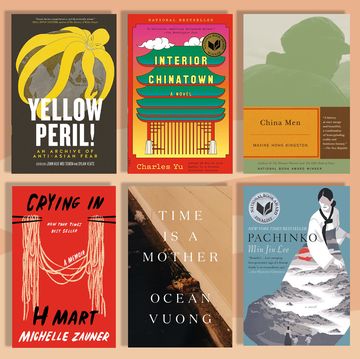
Read an Excerpt from Stephen King’s New Book
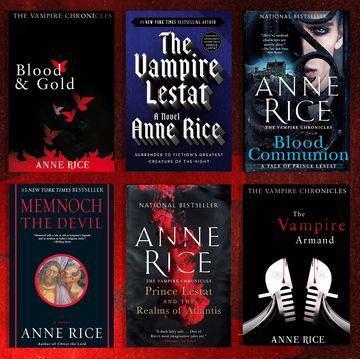
Dive Into the Series That Changed Vampires Forever

Why We Love Time Travel Stories

The Best Cookbooks of 2024 (So Far)

How “Mean Boys” Control Our Culture

How Fiction Became Edible
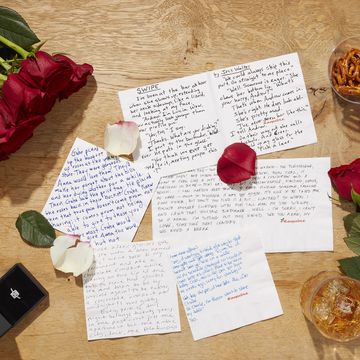
The Napkin Project (Love Stories Edition)

The Napkin Project: Andrew Sean Greer
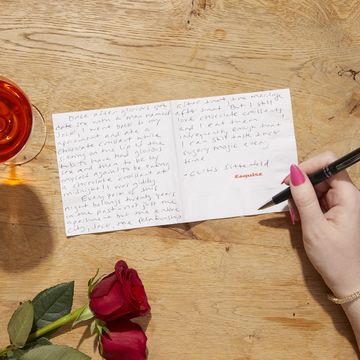
The Napkin Project: Curtis Sittenfeld
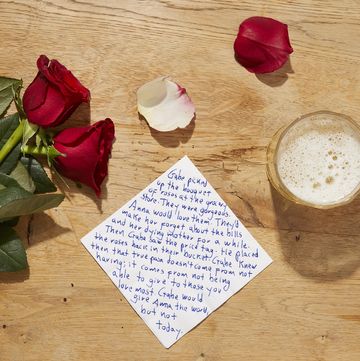
The Napkin Project: Gabino Iglesias
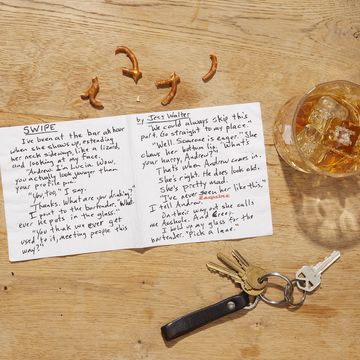
The Napkin Project: Jess Walter
Seeking Truths through Fiction
Historians on Writing Historical Genre Fiction
Alix E. Harrow, Suzanne Marie Litrel, and Laury Silvers | Nov 16, 2021
H istorians jumping genres need not confine themselves to writing traditional historical fiction. Their training and diverse interests lead them to working in all genres, from fantasy to mystery, and to categories such as young adult. Perspectives invited three historians who have published novels to explain how they found their way to genre fiction.
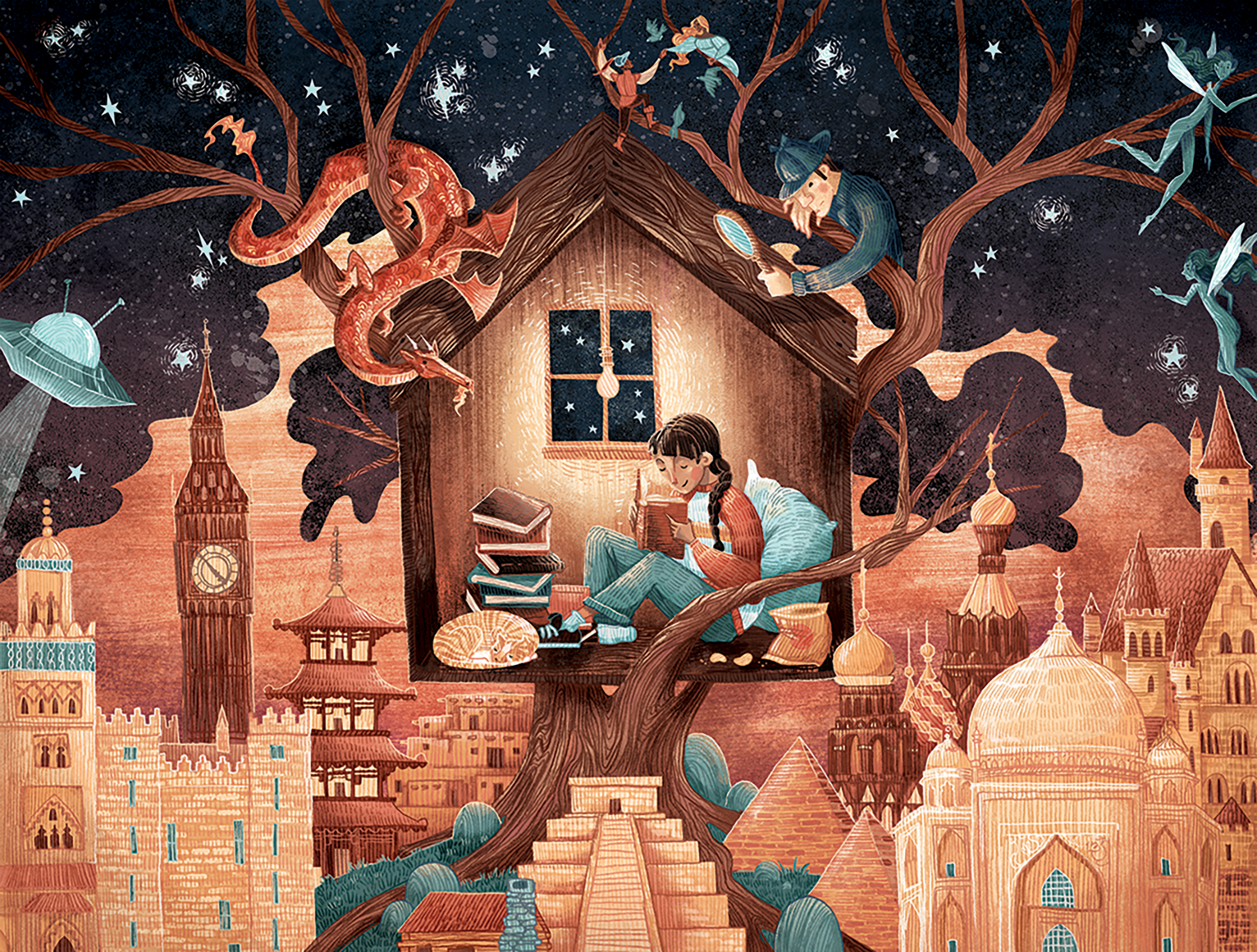
There’s much to enjoy in genre fiction—and readers can find historical stories in all of them, from mystery to fantasy to romance. Anne Lambelet
Telling the Truth, Slantwise
I grew up on stories, especially ones with magic. Before I could reliably point to Kentucky on a map, my mother’s bookshelves had given me a geography of make-believe: Narnia and Neverland, Middle-earth and Earthsea. I went to more than one midnight book release and played The Legend of Zelda on at least three consoles. In second grade, I carried around Edith Hamilton’s Mythology , and in middle school, I wrote an aggressively awful fantasy novel full of prophecies and unpronounceable names.
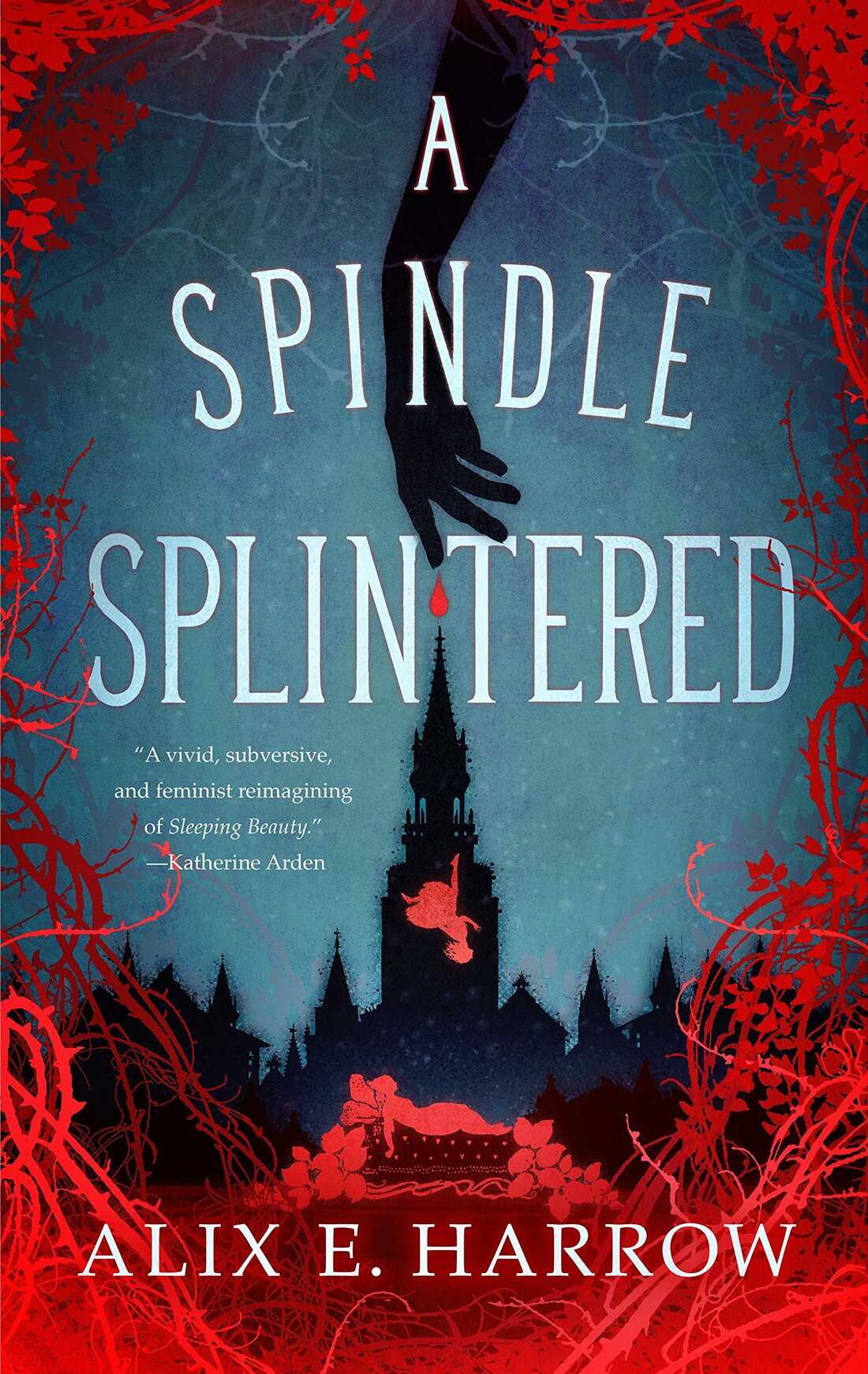
But by the time I left for college, I’d decided, with the crippling self-seriousness of adolescence, that I’d grown out of magic. I was always more of a Wendy than a Peter (“one of the kind who likes to grow up”), and the entire fantasy genre suddenly struck me as childish, an extended game of pretend for people who couldn’t face the real world. My mom gave me a brand-new set of my favorite space opera paperbacks as a going-away present. I hid them in the back of my dorm closet.
I majored in history. It was the anti-fantasy, I thought, a serious project of examining the world as it really was. Also, there were no math prerequisites, and a senior in my dorm told me it was “more reading than I could possibly imagine” in a badly misjudged effort to scare me off.
I turned out to be a somewhat erratic historian but a good enough writer to cover the gaps. I tended to skate over the actual labor of historical study: names and dates, material facts, the granular minutiae of the past. But I liked what historians did with those details. I liked the process by which disparate threads became a vast tapestry, a depiction of a time and place none of us had ever seen, and I very much liked arguing about the accuracy of that depiction. My professors called it the historical narrative ; now I think of it as a story.
I hadn’t tried to make up stories of my own since middle school—very few people are as brave at 20 as they were at 12—but in graduate school, I did the next best thing: I studied them. I built an MA thesis around late 19th- and early 20th-century British children’s literature. It felt like pulling off a low-stakes heist. I could indulge in pure fantasy but still have all those serious, important conversations I wanted to have (or at least be seen to have) about power and gender and environment. I could talk about the truth using nothing but lies. I could grow up but still go back to Neverland—at least for a visit.
I should have known I’d never be content with just a visit. One night in January—there is no month longer than a January in Vermont during your second year of grad school—I brought home an extra book from the library. It had nothing to do with my research—it was just a silly paperback fantasy I’d read as a kid. I didn’t remember much of the plot (wizard school? dragons?), but I remembered the soaring, lifting feeling it had left in my chest, and I missed it badly.
I could grow up but still go back to Neverland—at least for a visit.
So I reread A Wizard of Earthsea . And then The Tombs of Atuan and The Farthest Shore . They were, in fact, about wizards and dragons, and they did give me that familiar, nostalgic, almost melancholic ache in my chest. But they weren’t silly at all.
Ursula K. Le Guin was an academic before she was an author. Her Wikipedia page has all the most coveted keywords, the ones synonymous with sober, successful scholarship—Harvard, Phi Beta Kappa, Fulbright. But when she published Earthsea in 1968, it was largely ignored by sober scholars of the world, dismissed as children’s fantasy.
Which, of course, it is. But it’s also smart as hell. It’s about power and gender, environment and empathy. It’s a story about a world that never was, and it’s a reflection on the world as it actually is. It’s the truth but told slant. Reading Earthsea that January was the first time I understood fantasy and history not as opposites but as different approaches to the same frustrating, humbling, infinite work: making sense of the world, explaining it to ourselves. Telling stories.
I didn’t do anything dramatic, like quit school or write an instant New York Times best seller. But I felt a subtle shift in my trajectory, like a compass needle sliding away from true north. I started reading fantasy again, not for comfort or escapism but to learn.
Since then, I’ve written a dozen short stories, a couple of novellas, and two novels. They’re shelved differently in every bookstore I’ve seen so far: historical fiction, science fiction and fantasy, young adult, sometimes simply “fiction.” They range from fairy-tale retellings to epistolary adventure novels. But all of them are basically just lies assembled into stories. All of them are trying to tell the truth slantwise. And all of them, of course, have magic.
Alix E. Harrow is the Hugo Award–winning author of The Ten Thousand Doors of January , The Once and Future Witches , and A Spindle Splintered . She tweets @AlixEHarrow.
Time-Traveling Tales for Teens
As a teen, I disliked history. A lot. At my international school in São Paulo, Brazil, our World Civilizations teacher read to us from a textbook on European history. That made no sense. Neither did the fact that we copied prewritten notes from the blackboard and couldn’t ask questions. History was for bores, I decided then—those who memorized information about the dead and cared little for the living. I couldn’t imagine ever wanting to study, teach, or write about the past.
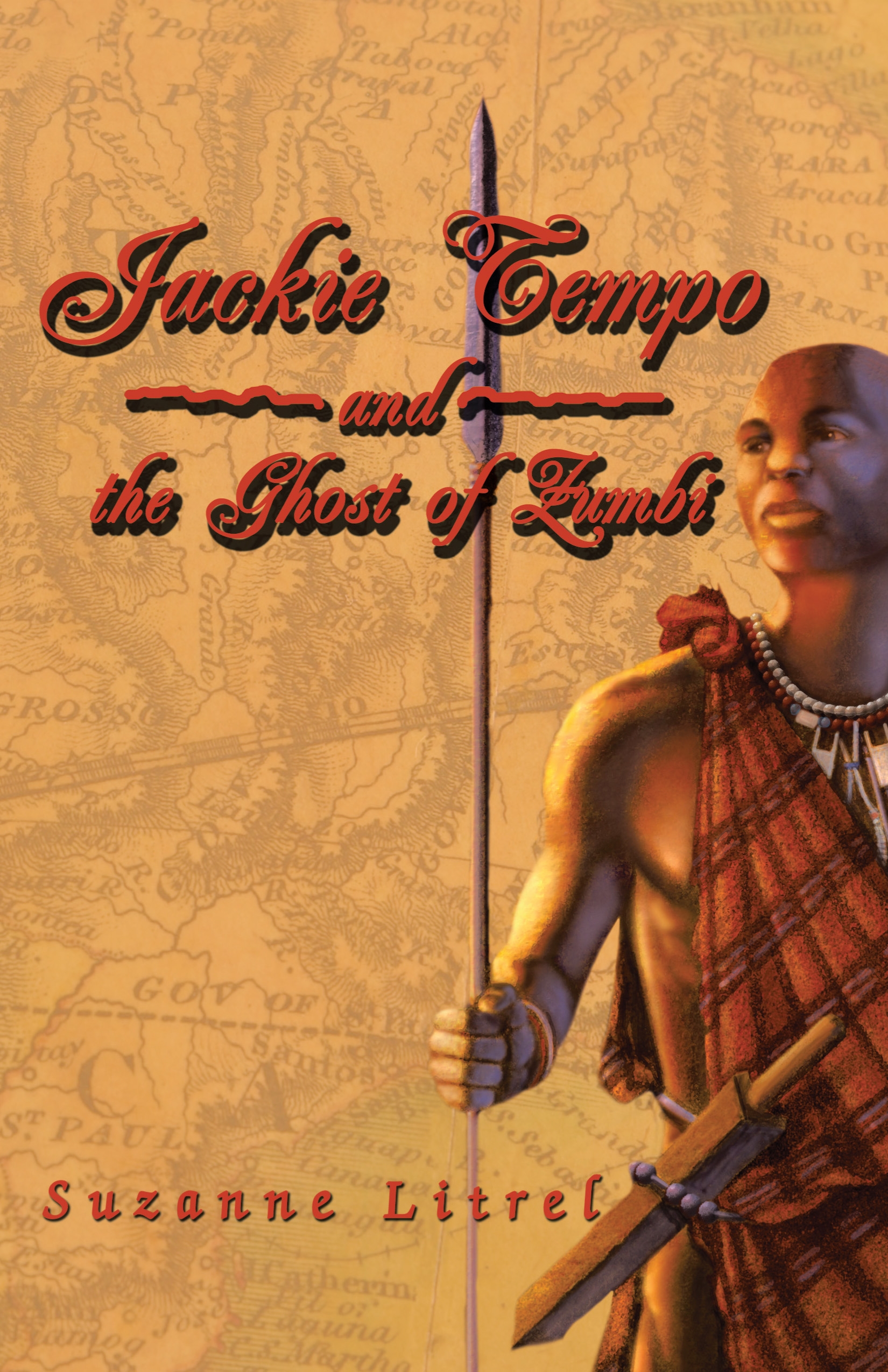
Historical fiction, on the other hand, offered an exciting escape from my tedious 10th-grade present. It also provided the unexpected bonus of exam prep. Long before my decidedly uncool teens, books had been my friends—but never more so than in World Civ. “We’ll start at the beginning, with the Greeks,” our teacher announced. I tuned out almost immediately but connected some of what he wrote to what I had read in Mary Renault’s The Persian Boy . As I took notes, I thought about Alexander’s true love, the Macedonian’s route to India, his disappointment with war-weary men, and his last laboring breaths. The story Renault wrote lent context, a place to park the facts my teacher shared. I could “remember” where I’d been with Alexander, even during exams.
Years later, I found my way to teaching 9th and 10th grade and realized that stories—real or imagined—encouraged my own students too. A few years in, I was assigned to teach AP World History. The course was known among high school teachers for its vast curriculum and subpar exam results, forcing me to retool my style. I began layering memoir and fiction into lessons to kick-start student engagement. Mindful of our 39-minute class periods, I chose pointed excerpts from memoirs and fiction that intersected with course content. These included scenes of China’s Cultural Revolution from Da Chen’s Colors of the Mountain . What emboldened a child to taunt and throw rocks at a former landlord—his own grandfather? We debated “turning points,” animated by Orson Scott Card’s Pastwatch: The Redemption of Christopher Columbus . Would preventing Columbus’s return voyage hold off European conquest in the Americas and impede the transatlantic slave trade? Such discussion helped plunge my students into the past. I stocked relevant fiction in my classroom, with more available in the school library, for extra-credit “book chats.” These made for rich reflection, spurring me and my students to further investigation. They did well on their AP exams, later confirming that stories helped them get past test anxiety and right into the essays.
Jackie Tempo has steered readers to new adventures in teaching and learning far beyond the classroom.
But what, I wondered, could help future high schoolers build historical context they would need? At home, my elementary-age son was drawn to Mary Pope Osborne’s Magic Tree House books. In creating a series that led students through history, Osborne encouraged readers to connect to classroom studies. I wanted to do the same for teens, with the intention of layering in more complex themes and content for their studies. I decided to give novel writing a try.
By my second year of teaching AP World History, my son was in middle school. I wrote at a middle school level but with high school content in mind. I wanted to create an easy, quick read that would provide AP World History students content, context, or both. I began with less-familiar “tricky” topics that teachers tended to skirt but that were deeply embedded in the curriculum. Drawing from my years in Singapore, Brazil, and Taiwan, as well as my graduate work in Chinese studies, I created Jackie Tempo, a time-traveling teen who struggled in both history class and in life.
Jackie learns that books can take readers out of time and place—in her case, to Ming China, colonial Brazil, and 10th-century Dar al-Islam. She finds a magical tome that opens temporal gates and her own worldview. With it, Jackie tracks her missing parents across the centuries. She meets characters long gone and gets caught up in their hopes and fears. Hers is an improbable, dizzying journey, and for educators and historians, it’s a story of time travel perhaps not unlike our own.
Teachers and students have called me Jackie, and this isn’t far from the truth. Jackie Tempo and the Emperor’s Seal includes scenes from my postgrad backpacking trip through China; Jackie Tempo and the Ghost of Zumbi partially reflects my encounters and experiences in Brazil. After an enriching field trip to a mosque, one 9th grader reflected on his initial hesitation to visit. This prompted me to highlight Abbasid-era culture and exchange in Jackie Tempo and the House of Wisdom . Some characters developed as I was writing, but I also introduced my own friends and mentors to readers. As they did for me, librarians and teachers offer Jackie refuge among books and an appreciation of past and present.
My readers have shared that the Jackie Tempo books steered them to new adventures in teaching and learning far beyond the classroom. At one author visit, a 9th-grade student who read The Emperor’s Seal for his English and social studies classes exclaimed, “I felt like I was actually in China!” In 2019, an early modernist told me she had read The Emperor’s Seal when she was unexpectedly assigned to teach a modern world survey. She had needed a crash course on 16th-century China, and she told me that it helped. And research for the next book prompted me to stop imagining overlooked voices and listen for them myself; I returned to graduate school and earned a PhD in history.
As a disaffected teen, I wanted out of my World Civ class. Historical fiction pointed the way. For some young readers, it shades in unfamiliar landscapes, adding texture to classroom studies. The genre personalizes the past for both students and the instructors who would take them there. After all, isn’t history—time travel—more fun when we have trusty companions by our side?
Suzanne Marie Litrel is the author of the Jackie Tempo novels and an educational consultant. She tweets @slitrel.
Sex & the Medieval Muslim Woman
Umberto Eco quipped that in every instance when critics accused him of anachronism in The Name of the Rose , he was quoting 14th-century texts. I get it. As a retired scholar of early medieval mystic Islam now writing historical mysteries set in 10th-century Baghdad, I, too, face ironic claims of anachronism in my Sufi Mysteries Quartet .
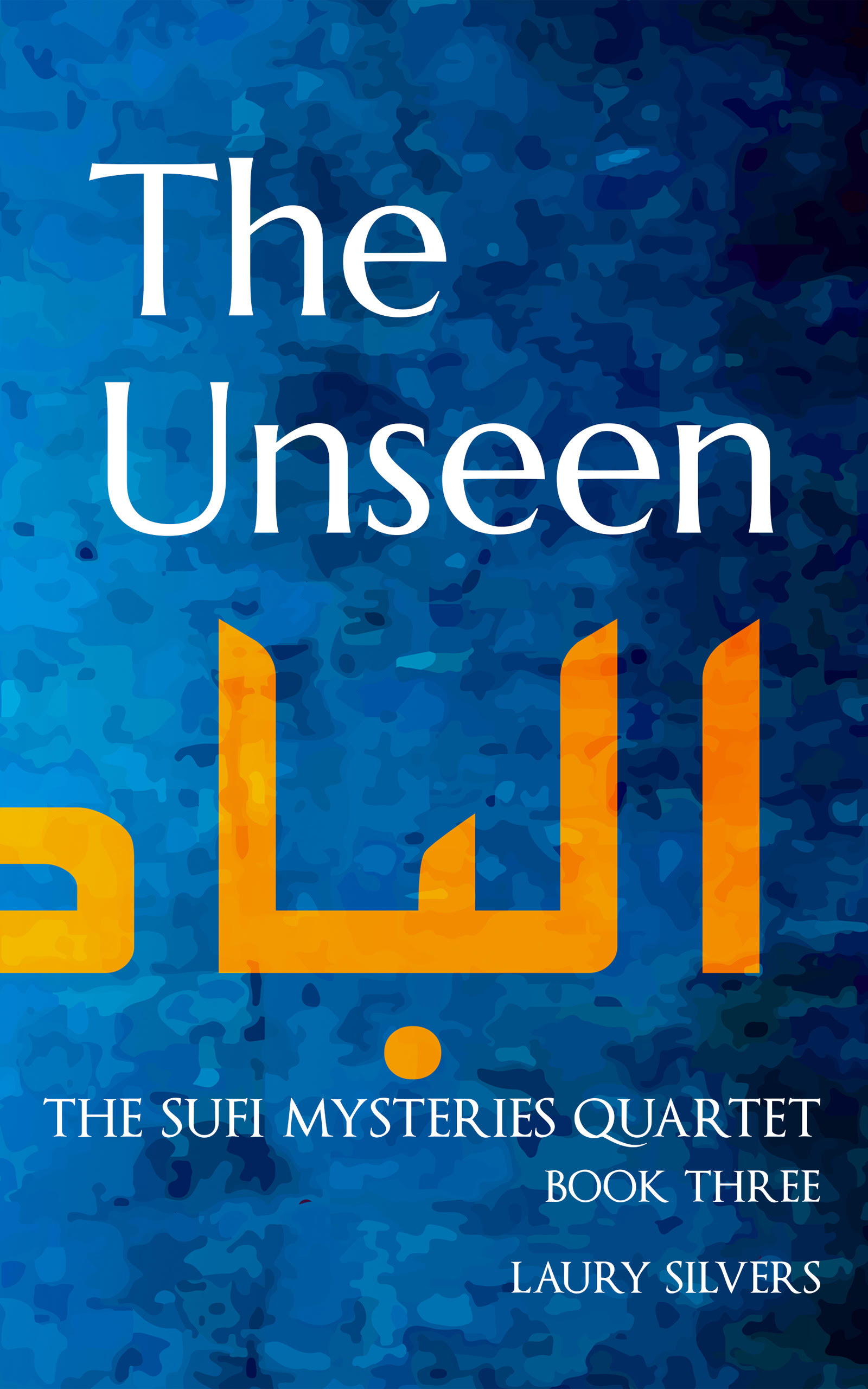
Most concerns arise over the women portrayed in my novels, especially Saliha, a free-spirited, sexy woman unwilling to let men control her. In our present era in which many assume that Muslim women desperately need saving, Saliha comes as a surprise. But as a specialist on women in this period, I can assure my readers that she is not a figment of my contemporary imagination.
I turned to writing mysteries after leaving the academy. I may have been done with academia, but I was not done doing history. The murder at the heart of each book arises from a historical question, and each red herring is a point of discussion on that question. The detailed personal story arcs, the sociopolitical settings, and even lushly described walks across Baghdad are parts of a larger argument I am making about the time and place. In short, I am grinding axes all over these books. I am saying straight-out what I could only hem and haw about in scholarly papers. And much of what I wanted to say was frank talk about the lives of early Muslim women.
All my characters are constructed on figures from the past. Using research in social history, I flesh out hints of women’s lives that come to us through mediated and often meager primary sources, and I bring them to life in my novels. For instance, in Ibn al-Jawzī’s Ṣifāt al-ṣafwa , a male transmitter describes a woman who starved herself for God as having once been “a fattened camel ready for sacrifice.” A woman denying men her body to sacrifice it for God got me thinking about women with the upper hand on male desire: not just ascetics but also those women who reveled in their alluring flesh, married or unmarried, noblewomen or washerwomen.
I may have been done with academia, but I was not done doing history.
I remembered Aisha bint Talha, the niece of one of the Prophet’s wives, who became the basis for Saliha’s character. Shocking stories of her behavior and beauty were widely shared. She refused to segregate herself from men and readily took part in their conversations. Aisha was fun loving, wild tempered, and hot blooded. She refused to cover her face, declaring that the world should know her superiority. This noblewoman was nothing but trouble for her husbands, and they thought she was worth it. In those early reports, she reads like a woman out of a noir movie. I could see Robert Mitchum leaning in to light her cigarette.
And so Aisha bint Talha became Saliha, written as an impoverished woman who escaped to Baghdad from a brutal marriage. A woman done with men except in the bedroom. Men want to protect her, and her refusal to marry spurs a story arc exploring medieval Muslim masculinities spanning three books. Saliha is her own woman, a loyal friend to amateur detective Zaytuna and a lover to Tein, a detective with the Grave Crimes Squad. She works hard, has ambition, and is good in a scrap when a case demands it.
Saliha spurns Tein’s pleas to marry, instead insisting on meeting him for trysts in the hidden doorways of ruined alleys. Women who worked in markets or fields or in the homes of the wealthy had few restrictions on their movements. A widow and a washerwoman like Saliha had opportunities to meet and flirt with men and even find a spot for a clandestine meeting. Unbelievable to some of my readers, yet these meetings happened. Sources such as marketplace inspector’s manuals and the observations of poets, scholars, and intellectuals like the famed al-Jāḥiẓ confirm these brief liaisons and even longer encounters.
But how realistic is Saliha’s insistence on sexual consent? Because married and enslaved women had no social or legal expectation of consent, a few (male) historians argue they did not consider forced sex as a violation. Yet medieval male transmitters passed on reports of free mystic women refusing to marry for this very reason. One account in al-Sulami’s Dhikr an-niswa al-muta ʿ abbidat al-sūfiyyāt describes a free married mystic woman speaking about forced sex in desperate terms, as a violation of her right to intimacy with God. A jurist’s account reveals that an enslaved woman brought her owner to court on charges of sexual brutality. My second novel in the series, The Jealous , addresses these very matters.
The historical axe I’m grinding with Saliha’s character is not to prove there were sexy, independent sidekicks back in the day. Maybe there were, but that is not my point. I am telling the story of a woman who refused to be controlled by men, with all the attendant risks, and, through her character, opening a door to the lives of urban medieval women of her class.
It is a maxim of historical fiction that the author must not “do history,” as it takes away from the story itself, but I have pinned my hopes on Eco’s example. It is possible to educate pleasurably through narrative. I think I succeeded. Well, at least, my novels are taught in university classrooms. Not the same as being an internationally renowned scholar and best-selling author, but it feels pretty darn good. And concerns about anachronisms? They educate too. Surprising readers with medieval Muslim women who demand a say over their bodies may open the reader up to new paths of thought about the Muslim past and the present.
Laury Silvers is a retired historian of early Islam and Sufism and the author of the Sufi Mysteries Quartet . She tweets @waraqamusa.
Tags: Features Research Europe Global History Latin America Middle East Cultural History Teaching & Learning
The American Historical Association welcomes comments in the discussion area below, at AHA Communities , and in letters to the editor . Please read our commenting and letters policy before submitting.
Please read our commenting and letters policy before submitting.

Related Content
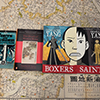
Jeffrey Wasserstrom | Nov 10, 2021
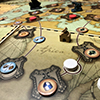
Patrick Rael | Oct 13, 2021
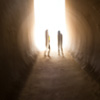
R.E. Fulton | Dec 10, 2020

- NONFICTION BOOKS
- BEST NONFICTION 2023
- BEST NONFICTION 2024
- Historical Biographies
- The Best Memoirs and Autobiographies
- Philosophical Biographies
- World War 2
- World History
- American History
- British History
- Chinese History
- Russian History
- Ancient History (up to 500)
- Medieval History (500-1400)
- Military History
- Art History
- Travel Books
- Ancient Philosophy
- Contemporary Philosophy
- Ethics & Moral Philosophy
- Great Philosophers
- Social & Political Philosophy
- Classical Studies
- New Science Books
- Maths & Statistics
- Popular Science
- Physics Books
- Climate Change Books
- How to Write
- English Grammar & Usage
- Books for Learning Languages
- Linguistics
- Political Ideologies
- Foreign Policy & International Relations
- American Politics
- British Politics
- Religious History Books
- Mental Health
- Neuroscience
- Child Psychology
- Film & Cinema
- Opera & Classical Music
- Behavioural Economics
- Development Economics
- Economic History
- Financial Crisis
- World Economies
- Investing Books
- Artificial Intelligence/AI Books
- Data Science Books
- Sex & Sexuality
- Death & Dying
- Food & Cooking
- Sports, Games & Hobbies
- FICTION BOOKS
- BEST NOVELS 2024
- BEST FICTION 2023
- New Literary Fiction
- World Literature
- Literary Criticism
- Literary Figures
- Classic English Literature
- American Literature
- Comics & Graphic Novels
- Fairy Tales & Mythology
- Historical Fiction
- Crime Novels
- Science Fiction
- Short Stories
- South Africa
- United States
- Arctic & Antarctica
- Afghanistan
- Myanmar (Formerly Burma)
- Netherlands
- Kids Recommend Books for Kids
- High School Teachers Recommendations
- Prizewinning Kids' Books
- Popular Series Books for Kids
- BEST BOOKS FOR KIDS (ALL AGES)
- Ages Baby-2
- Books for Teens and Young Adults
- THE BEST SCIENCE BOOKS FOR KIDS
- BEST KIDS' BOOKS OF 2023
- BEST BOOKS FOR TEENS OF 2023
- Best Audiobooks for Kids
- Environment
- Best Books for Teens of 2023
- Best Kids' Books of 2023
- Political Novels
- New History Books
- New Historical Fiction
- New Biography
- New Memoirs
- New World Literature
- New Economics Books
- New Climate Books
- New Math Books
- New Philosophy Books
- New Psychology Books
- New Physics Books
- THE BEST AUDIOBOOKS
- Actors Read Great Books
- Books Narrated by Their Authors
- Best Audiobook Thrillers
- Best History Audiobooks
- Nobel Literature Prize
- Booker Prize (fiction)
- Baillie Gifford Prize (nonfiction)
- Financial Times (nonfiction)
- Wolfson Prize (history)
- Royal Society (science)
- Pushkin House Prize (Russia)
- Walter Scott Prize (historical fiction)
- Arthur C Clarke Prize (sci fi)
- The Hugos (sci fi & fantasy)
- Audie Awards (audiobooks)
Make Your Own List
The Best Fiction Books » Historical Fiction
The best historical fiction of 2024, recommended by katharine grant.
The judges of the Walter Scott Prize aim to highlight the very best new historical novels, and in 2024 they have settled on a varied shortlist featuring a Trinidadian tragedy, a Vatican-based thriller, and a charming coming-of-age tale from 1960s Middle England. We spoke to Katharine Grant , chair of the judging panel, to find out more.
Interview by Cal Flyn , Deputy Editor
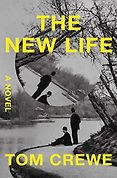
The New Life: A Novel by Tom Crewe

Hungry Ghosts: A Novel by Kevin Jared Hosein
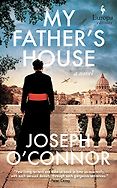
My Father's House: A Novel by Joseph O'Connor
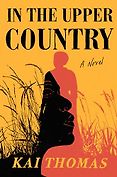
In the Upper Country: A Novel by Kai Thomas
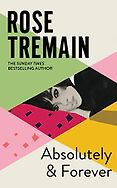
Absolutely and Forever by Rose Tremain

The House of Doors by Tan Twan Eng

1 The New Life: A Novel by Tom Crewe
2 hungry ghosts: a novel by kevin jared hosein, 3 my father's house: a novel by joseph o'connor, 4 in the upper country: a novel by kai thomas, 5 absolutely and forever by rose tremain, 6 the house of doors by tan twan eng.
L et me begin our discussion of the six historical novels shortlisted for the 2024 Walter Scott Prize by asking you, the chair of the judging panel, whether it has been a good year for historical fiction ?
What do the Walter Scott Prize judges look for in a historical novel?
Let’s step through each of the 2024 shortlisted historical novels in turn, starting with Tom Crewe’s The New Life . It’s a highly acclaimed debut, a book about the gay liberation movement in Victorian London. Tell us more.
Fundamentally, beneath the story itself, this is a book about loneliness, in particular the loneliness of gay life in the 1890s. It’s the story of a brave attempt to rationalise sexual behaviour, and thus remove the stigma attached to homosexuality. Tom Crewe has used, quite loosely, the lives of two men, John Addington Symonds and Havelock Ellis who, in the book, become John Addington—a single-minded man who wants to create a world in which everybody is free to live as their nature dictates, but who is also flawed and selfish; and Henry Ellis, a shy, fragile, clever man who wants the same thing. Both these men personify that high Victorian belief that if only one could educate people, people would understand and accept. So, by proving that homosexuality has always been a part of human life and human nature, they hoped it would become ordinary, as indeed has happened now in the UK. But what happens when principle, rational thinking and hope crash into reality? Will they succeed or themselves face ruin? That’s the great tension at the heart of the book.
There’s a rare honesty in the writing of this book. It’s written so directly, the sex graphic yet unsensational. Tom Crewe is a true craftsman.
Absolutely. I’ve read some responses to this novel that argue that it speaks to something in our contemporary culture as well—that it feels timely. Would you agree.
I would, although I’m not a great believer in always drawing parallels from the past to the present. But there are certainly parallels in this case. The New Life also reminds us, though, that change isn’t only about protesting in the streets. There’s a place for quiet, rational argument.
In this book, the two men have a wonderful optimism and courage, and perhaps in order to change anything there needs to be an element of selfish single-mindedness although that selfishness causes suffering not just in the lives of these men, but also in the lives of the people they were attached to.
Like the wives of closeted men?
The second novel on your 2024 historical fiction shortlist is Kevin Jared Hosein’s Hungry Ghosts, set towards the end of colonial rule in Trinidad. I liked what The Times had to say about it: “like a Greek tragedy relocated to a gothic Caribbean setting worthy of Jean Rhys.”
It’s a great quote, and true. Hungry Ghosts is a tragedy, and we’re swept into it by writing that conjures a whole physical, emotional and natural world of Trinidad; you get a sense of a burgeoning place, almost overwhelmed by vegetation. Hosein write with what one critic has called “sensory maximalism”. The colours are bold. The smells waft from the page. When you close the book, you’re surprised to find yourself still at home.
Hungry Ghosts is the story of a man, Hans Sharoop, born into poverty, who hopes for better things, who is optimistic, and who gets an opportunity—which he takes—but then falls prey to all kinds of temptations. His family is destroyed as a result, but he’s not a bad man, only weak. If you’re born into abject poverty, it’s hard not to fall for a dream.
It’s also a book about absence, with the absent Dalton Changoor, whose business is shadily successful and who employs Hans, hanging over this book like a sinister cloud. Absent also is Hans and his wife Shweta’s dead daughter, whose name they never utter yet who is always present between them. Kevin Jared Hosein’s absences aren’t just absences, they’re characters in their own right.
“At least the label is no longer pejorative. People are now proud to be writers of historical fiction”
The third historical novel on the 2024 shortlist is Joseph O’Connor’s My Father’s House , set in occupied Rome, 1943. Its plot is based on a true story of a Vatican priest dubbed the ‘Irish Schindler.’ The book has been characterised as a literary thriller , does that sound right to you?
I suppose so, although that seems a bit cruel—as if other thrillers aren’t literary. It’s certainly a thriller. It’s tense, tense, tense. But the big thing in this novel is not just the tension, it’s the voices. Joseph O’Connor gives a masterclass in the different voices of the people gathered around the priest Hugh O’Flaherty to help him organise and run the Escape Line—the escape routes out of Italy for prisoners of war and others being pursued by the Nazis. The voices are unforgettable, their code-name ‘The Choir’ absolutely apt.
So, we have the tension and the voices, and also we have Rome. If you feel you know Rome, you’ll find much to enjoy in the twists and turns of the streets, the hidden alleys, the sudden expanses and that ever-present ‘seethe of black water’, the Tiber. It’s full Rome immersion.
But we also have a clever construction in this novel. Through a series of post-war interviews inserted at various points, we know who survives, and we know how the characters became involved in the Choir. So the tension is less about who will live and who will die amongst the characters we get to know, and much more about whether the Escape Line will succeed for the countless unnamed people secreted all over Rome. And of course there are deeper tensions about how human nature evolves during wartime. When faced with the complexities of war, what is courage? What’s the difference between courage and self-aggrandisement?
As with all the best thrillers, I felt a bit breathless at some stages reading this book! And beware if you’re reading on the bus or the underground: it’s the kind of book that can make you miss your stop.
We’ve been talking quite a bit recently on Five Books about the borderlands between genres. I suppose, say, spy fiction set during the Cold War would count as historical fiction too.
I’m not really a genre person. I don’t terribly like labels. I find them unhelpful. Like other novels, the historical novel is, fundamentally, simply a story, as a spy story is simply a story. Even with fiction featuring real figures, as is the case with much historical fiction, fiction is, by definition, a product of the imagination. It’s just fiction.
Returning to historical fiction, though, if we must use a label, at least that label is no longer pejorative, which is a good thing. People are now proud to be writers of historical fiction. Some of that pride has certainly to do with Hilary Mantel , not just what she wrote in the genre itself, but what she wrote about it, and also how she spoke about it, particularly in her Reith Lectures . If historical fiction needed its rehabilitation firmly stamped, Hilary Mantel was that stamp, moving the argument on from ‘isn’t historical fiction just a, usually misconceived, facsimile of the past?’ by showing how the writer of historical fiction actually works with the past—the nuts and bolts, as it were.
That makes sense. Perhaps we could talk next about Kai Thomas’s In the Upper Country , which is set in an 18th-century Canadian town where escaped slaves from the United States have resettled. This is the fourth book on your 2024 historical novels shortlist.
First of all, this book—which is Kai Thomas’s first novel—is marvellously done, technically speaking. It’s stories-within-stories, a bit like Scheherazade . There are two women, one old, one young, telling each other stories and these stories and how they tell them are intrinsic to the book. It’s a brave construction, and very successful.
The novel is set not on the Underground Railway by which Black people fleeing from slavery crossed the border into Canada, but in the free town established at the end of the Railway. We’re in the complicated world of individuals from different communities – the Black community, the Indigenous community, the Métis community – whose histories are rich and whose choices are complex. Everybody wants ‘freedom’ but freedom is more complicated than it sounds, as we learn through the aftermath of the shooting of a slave hunter by an old woman.
In most novels, the propulsion is forward. In In the Upper Country , the energy is more flexible, flowing forwards and backwards, sweeping the reader along as if in the tide, never ceasing, but you’re not always sure exactly where you’ll find yourself. In other words, the experience of reading is more like sitting and listening to a storyteller, which is just as it should be given the construction of the book.
But don’t misunderstand me. The stories aren’t random. Each story is a small revelation, so it’s like doing a jigsaw when you haven’t got the picture on the front of the box. You’re there, in this book, piecing it all together. Particularly for a first novel, In the Upper Country is very sure of itself and confidence is such a big thing in writing, particularly in a novel like this. If the author is confident, you feel carried along.
Right. As if the author is grabbing you by the hand and leading you somewhere.
We’ve reached Rose Tremain’s Absolutely and Forever. Tremain has previously been shortlisted for the Walter Scott Prize for her historical novels Merivel: A Man of His Time and The Gustav Sonata .
Yes, Rose Tremain always offers the reader so much! Absolutely and Forever is the coming-of-age story of a girl, Marianne, from a well-to-do family—boarding school, tennis courts, ponies—who, aged 15, falls ‘absolutely and forever’ in love with a boy. It doesn’t work out. The story may not be unusual in itself but in Rose Tremain’s hands it’s so ‘funny, piercing, singular’, as one critic described it, that it turns into a small masterpiece. Marianne may be as naïve and guileless as girls of her age in the 1960s were, but her sense of herself completely bewitches the reader. And Rose Tremain keeps a tight hold of her story. The book is short and may, to some, seem slight, but every word, every detail, is carefully chosen. It’s a book you can read a second and a third time and still find new aspects to admire.
Charming, and indeed sad, this isn’t a tragic book. Amongst other things, it’s a book about recognising what things actually are, which, and this is so bitter-sweet, Marianne never quite does with her ‘absolutely and forever’ love.
It sounds like a grown-up I Capture the Castle .
I think that brings us to the final historical novel on the 2024 shortlist: Tan Twan Eng’s The House of Doors , which is set in the Federated Malay States, a British colony, in the 1920s.
There are a lot of different strands to this novel, one of which is secrets. But it’s also about memory and loss, and the stories we tell to ourselves and to others. Set in 1921 in the Straits Settlements of Penang, we have Somerset Maugham and his lover coming to stay with the Hamlyns: Robert Hamlyn, a lawyer, and his wife Lesley a society hostess. The visit is uneasy. Everybody has secrets, and Somerset Maugham was notoriously good at persuading people to share them, and then, barely disguising the characters, using the stories to his own authorial advantage. With great artistry, Tan Twan Eng shows us how the unravelling of secrets leads to other stories—and so, in The House of Doors , we have, through Lesley Hamlyn’s eyes, the story of Dr. Sun Yat Sen, the revolutionary, the story of Ethel Proudlock, who shot a man and was charged with murder, and the secrets of Lesley herself. Stories within stories, and all told with what has been called the ‘reverse colonial gaze’.
How interesting.
Yes, it’s a different angle. Brave! And Tan Twan Eng has a wonderful style, sharp and clear. Those painted doors! ‘They spun slowly in the air, like leaves spiralling in a gentle wind, forever falling, never to touch the earth.”
Perhaps I could draw us to a close by asking whether the process of judging so many novels has left you with a sense of optimism about the state of historical fiction today?
It has. Given the apparent strictures on novelists, whether real or imagined – accusations of cultural appropriation, for example –there’s always the worry that writers might avoid writing about anything beyond themselves. Of course, we’ll never know how many historical novels will not be written because in the climate of culture wars people are nervous, but among the novels that have arrived I think there is a brightness, yes, a kind of optimism, and a determination to write about things in which the writer is interested, and in which writers feel readers will be interested. So that’s heartening, and I’m sure I can speak for my fellow Walter Scott Prize judges when I say that we’re already looking forward to next year.
The winner of the 2024 Walter Scott Prize for Historical Fiction will be announced at the Borders Book Festival, Scotland, on 13 June.
May 10, 2024
Five Books aims to keep its book recommendations and interviews up to date. If you are the interviewee and would like to update your choice of books (or even just what you say about them) please email us at [email protected]
Support Five Books
Five Books interviews are expensive to produce. If you've enjoyed this interview, please support us by donating a small amount .
Katharine Grant
Katharine Grant is a British novelist and has been a judge for the Walter Scott Prize for historical fiction since 2017. Her novel Blood Red Horse was a Booklist Top Ten Historical Fiction for Youth and a USBBY-CBC Outstanding International Book for 2006. The sequel, Green Jasper was shortlisted for a 2006 Royal Mail Scottish Children’s book award. She has ten novels published to date. Sedition , her first novel for adults, was longlisted for the 2014 Desmond Elliott prize.
We ask experts to recommend the five best books in their subject and explain their selection in an interview.
This site has an archive of more than one thousand seven hundred interviews, or eight thousand book recommendations. We publish at least two new interviews per week.
Five Books participates in the Amazon Associate program and earns money from qualifying purchases.
© Five Books 2024

8 of the Best Translated Historical Fiction Novels
Rachel Brittain
Rachel is a writer from Arkansas, most at home surrounded by forests and animals much like a Disney Princess. She spends most of her time writing stories and playing around in imaginary worlds. You can follow her writing at rachelbrittain.com. Twitter and Instagram: @rachelsbrittain
View All posts by Rachel Brittain
Translated historical fiction adds the element of a place’s unique history, as well. These eight translated historical fiction novels tackle colonialist pasts, reimagine empires, and feature some real people and places. You’ll be swept away in the prose — prose that took not one but two writers to get to you — and lose yourself in incredible stories set in near and faraway places. It’s the perfect start to explore the world because only through learning about the past can we begin to understand what’s going on in the present.
The Best of Translated Historical Fiction
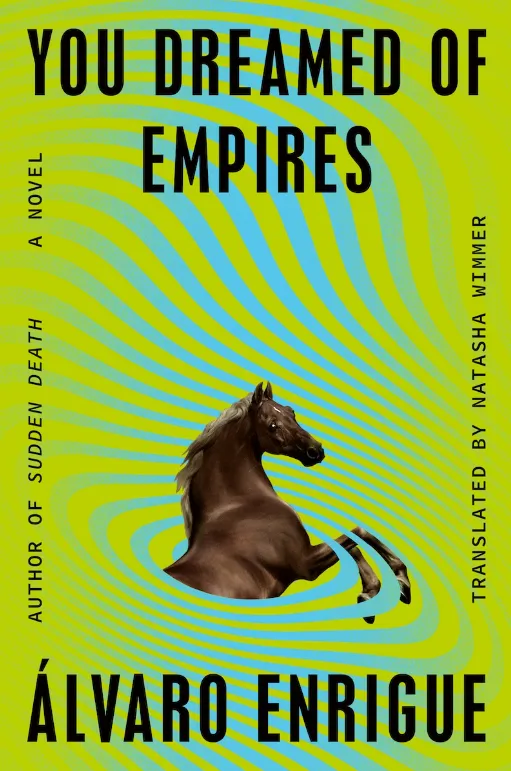
You Dreamed of Empires by Álvaro Enrigue, translated by Natasha Wimmer
In Enrigue’s reimagining of the conquistadors arrival in Tenochtitlan, things don’t go exactly as history had planned. Moctezuma lives in a mushroom induced haze and Hernán Cortés believes his translator Malinalli, a Nahua princess enslaved by the Maya, will be their secret weapon against the Aztecs. But all is not as it seems, and the assumptions everyone makes will soon be their downfall.
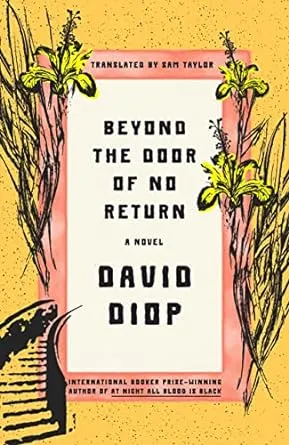
Beyond the Door of No Return by David Diop, translated by Sam Taylor
Aglaé and her father only grew close late in life. His obsession with finishing a comprehensive botanical encyclopedia left him no time for the wife who eventually divorced him or the daughter who yearned for his attention. But when Aglaé discovers a series of journal entries addressed to her by her late father, she begins to understand the experiences he was trying to run from by burying himself in work. Michel Adason’s expedition to Senegal is not exactly what was recounted in his published account. And now, Aglaé will finally be able to understand why her father hid the truth — and is telling her now.
David Diop is an exemplary writer of historical fiction. His first novel, translated into English, At Night All Blood is Black , follows the surreal horrors of a Senegalese man and his best friend on the front lines of WWI and is equally worth a read.
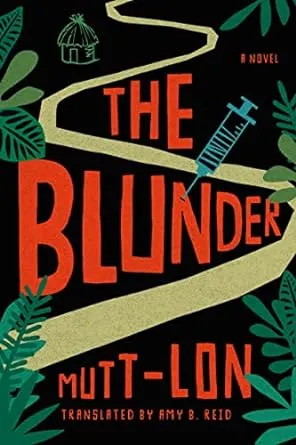
The Blunder by Mutt-Lon, translated by Amy B. Reid
In 1929, a French military doctor dispatched to Cameroon to help with an epidemic of sleep sickness realizes a doctor under his watch has committed medical malpractice so severe that hundreds have been left blind. Now, a grieving mother desperate to redeem herself must set off across the forest to find a missing Cameroonian princess before this case of malpractice can lead to all-out war.
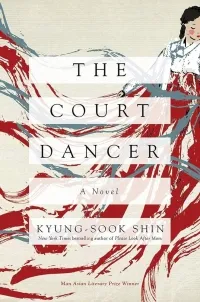
The Court Dancer by Kyung-sook Shin, translated by Anton Hur
Based on the true story of an orphan taken under the wing of an Empress during Joseon-era Korea, The Court Dancer follows Yi Jin as she captures the attention of a French diplomat and journeys to France, where she begins translating and publishing Joseon literature. Grief and homesickness eventually bring her back to the Joseon court, but tragedy awaits her. Instead of a warm welcome, Yi Jin arrives home only for her beloved empress to be assassinated.
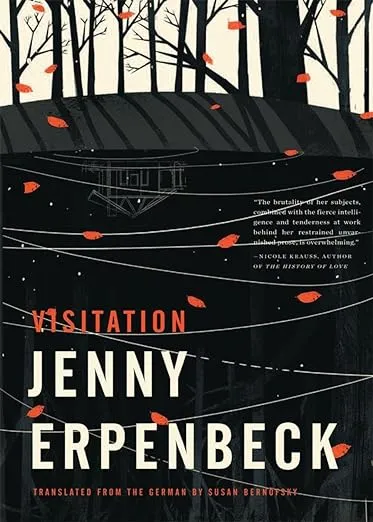
Visitation by Jenny Erpenbeck, translated by Susan Bernofsky
In a house in the woods outside Berlin, people come and go. From the nineteenth century through the Weimar Republic, two World Wars, and the Socialist German Democratic Republic and its eventual reunification, twelve different people seek shelter in this house. It is the house, more than the people, who stars in this story, where violence, upheaval, and reconciliation change the face of the country even as some fundamental things stay the same.
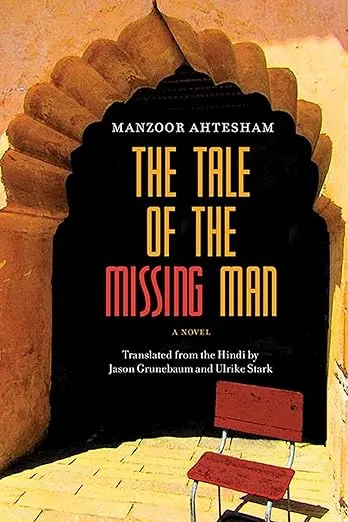
The Tale of the Missing Man by Manzoor Ahtesham, translated by Jason Grunebaum and Ulrike Stark
Following the 1947 partition of India and Pakistan, Zamir Ahmad Khan feels alienated and adrift, stuck in memories of his childhood, his writing, and his hometown of Bhopal. Khan’s story is one of an identity crisis, both on a personal and political scale, as regions are divided and people are separated by a new border drawn on the map.
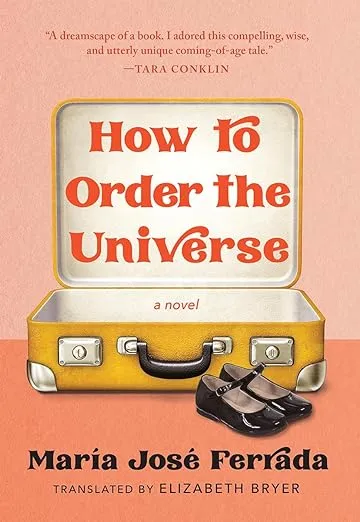
How to Order the Universe by María José Ferrada, translated by Elizabeth Bryer
In Pinochet-era Chile, a daughter joins her traveling salesman father on his trips across the country. She’s too young to understand the changes taking place around her. But when they cross paths with an enigmatic photographer, his presence threatens to upend their unusual way of life. How to Order the Universe creates a snapshot of a father-daughter relationship and a country on the brink of unmitigated change.
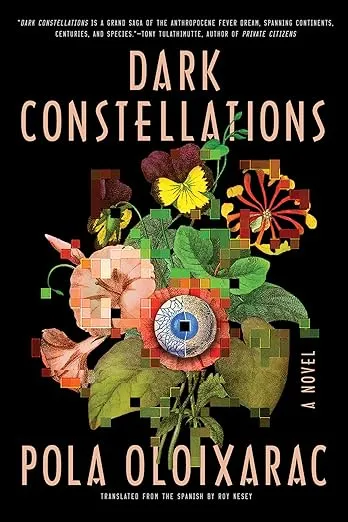
Dark Constellations by Pola Oloixarac, translated by Roy Kesey
Three interconnected stories spanning the nineteenth, twentieth, and twenty-first centuries in Argentina follow humanity’s need to organize and classify information in order to exert control. From the study of a hallucinogenic plant in 1883 to modern mass surveillance program in the 2020s, biologists, researchers, and hackers are both empowered and affected by the knowledge they seek.
I’m also very much hoping with the success of Ann-Helén Laestadius’s Stolen , not to mention the recent Netflix film adaptation, that we’ll get an English translation of her new historical fiction novel, Straff . Set in the 1950s and 1980s, this new book explores the Swedish government’s practice of sending Sámi children to “nomad schools,” not unlike the residential schools where Indigenous children in the Americas endured unthinkable abuse. Colonial and racist practices of the past laid the groundwork for the systemic discrimination Indigenous groups still face, and Straff provides an important look into the bigotry affecting Sámi people today.
If you’re interested in reading more translated fiction in the meantime, though, here are even more great books in translation to read:
12 Historical Fiction Books in Translation
10 Books in Translation by Women
8 Great Novellas in Translation

You Might Also Like

Willow Smith, daughter of Jada and Will, stops…
Share this:.
- Click to share on Facebook (Opens in new window)
- Click to share on Twitter (Opens in new window)
Baltimore Sun eNewspaper
- Latest Headlines
- News Obituaries
- Death Notices
- Things To Do
Things To Do Books
Willow smith, daughter of jada and will, stops by the pratt to discuss her debut novel.

Technically, perhaps, the 23-year-old was born in California, where she lives today. But the writer, singer and activist is the youngest child of Baltimore’s favorite daughter, Jada Pinkett Smith, and she comes from a long line of strong, confident, proud Black Baltimore women including her grandmother, Adrienne Banfield-Norris.
In Smalltimore, that’s enough reason to embrace Willow Smith as family.
And more than 300 Baltimore-area women turned out Friday night at the Enoch Pratt Free Library to support Smith, who is on a book tour for her first novel, “Black Shield Maiden,” published Tuesday by Random House.
“I love being Black,” Smith told her interviewer, Glory Edim, founder of the Well-Read Black Girl website and podcast.
“I want to inspire people who felt like they didn’t have a voice to just sing and know that deep in your heart your voice is valuable.”
Smith is the third member of her family to put pen to paper. Her father Will Smith’s autobiography “Will” written with the help of Mark Manson, was published in 2021. Last fall, her mother’s memoir, “Worthy,” made waves with its candid examination of Pinkett Smith’s relationship with her husband.
But instead of probing her own psyche, Willow Smith created a work of historical fiction to explore the possibility that Viking warriors, who ventured as far south as Morocco, might have encountered African people and their culture. While studying the legend of Erik the Red, Smith stumbled on Thorhall the Hunter, a fictional character who some historians have hypothesized was based on a real-life Black man. If Thorhall had a daughter, Smith wondered, what would she be like?
Her speculations resulted in the fictional character of the warrior maiden Yafeu, the protagonist of a book that Smith spent six years writing with her friend, Jess Hendel.
That intellectual rigor impressed Shawn Lee, 45, of Baltimore, who attended the discussion with her daughter. Lee said she first became familiar with Willow Smith from the “Red Table Talk” show that ran from 2018 to 2023 and was co-hosted by Pinkett Smith, Banfield-Norris and Willow Smith.
“I admired the way she handled all those grownup conversations,” Lee said. “She’s a very intelligent young lady.”
Though the crowd at the Pratt was almost exclusively female, participants ranged from senior citizens to preschoolers. If older audience members became acquainted with Willow Smith primarily through her movie-star parents, the opposite is true for members of Generation Z.

Willow Smith, a singer, songwriter, and activist, discusses her new book, Black Shield Maiden, at the Enoch Pratt Central Library on Friday. (Kim Hairston/Staff)

Pratt Library
From left to right: first row, Willow Smith, Jada Pinkett Smith and Jaden Smith. Behind them, Trey Smith and Will Smith. They are at Enoch Pratt Free Library for an event about Jada Pinkett Smith's book "Worthy."

Kim Hairston/Baltimore Sun
Jada Pinkett Smith and her daughter Willow Smith visit the Baltimore School for the Arts on Wednesday.

FRANCOIS GUILLOT / AFP/Getty Images
Baltimore native Jada Pinkett Smith and her daughter, Willow Smith, attend the Chanel 2016-2017 fall/winter ready-to-wear collection show today in Paris. Willow Smith was named the new face of Chanel.

Getty Images
Actor Jaden Smith, singer Willow Smith, actors Will Smith, and Jada Pinkett Smith arrive at the premiere of Paramount Pictures' "Justin Bieber: Never Say Never" held at Nokia Theater L.A. Live.
They became fans of Willow Smith in 2010, when she was 9 years old and her debut single, “Whip My Hair,” peaked at number 11 on Billboard’s Hot 100. They have followed her career as a singer-songwriter with viral hits like “Meet Me at Our Spot” and a new album, “Empathogen,” released on May 3. They admire the fashionista with her father’s height and her mother’s delicate features who turned heads earlier this week at the Met Gala.
“My children have grown up being fans of Willow,” said LaShelle Bynum, 64, of Baltimore. “I came to this talk tonight because I wanted to learn about her for myself.”
Here is some of what Bynum discovered:
Though Willow Smith can rock a gold chain dress over a black bikini, she thinks of herself as a bookworm and nerd.
“I was a really voracious reader when I was growing up,” she told Edim. “I was always asking my dad to take me to the bookstore.”
She is a big fan of historical fiction series, and cited Jean M. Auel’s “Earth’s Children” and Marion Zimmer Bradley’s “The Mists of Avalon” as favorites.
“What I love about historical fiction,” she said, “is that there is an interesting mix between going back in time and using that period to comment on current situations.”
The intersection of real life and make-believe can be a perilous place for an author; when Smith’s publisher released two early excerpts of “Black Shield Maiden” in May 2022, it inspired a backlash of criticism from the Arab world, which characterized those passages as anti-Muslim.
“The Imazighen are not mythological tribes,” wrote Rania Kettani in “The Gazelle,” a student -run publication that operates out of New York University. “We are well and alive.”
Kettani wrote that she objects to “half of my genealogy” being depicted as “barbarous and dangerous religious zealots.”
Smith wasn’t asked about the controversy during her talk at the Pratt, and it couldn’t immediately be determined whether the disputed passages had been rewritten prior to publication.
But in a post on social media that has since been deleted, Smith’s co-author, Hendel, wrote that the pair had conducted considerable research on Islamic societies and added that the novel “tackles directly prejudices about the Amazigh and other Islamic peoples.”
Smith said Friday at the Pratt she is planning at least two more sequels to “Black Shield Maiden.”
More in Uncategorized
![By MICHELLE L. PRICE (Associated Press) NEW YORK (AP) — Donald Trump said Friday his campaign has accepted an invitation from Fox News for his yet-to-be-chosen running mate to debate Vice President Kamala Harris, and he urged her to accept as well. In fact, Harris has already said she’ll debate — but on a rival […] By MICHELLE L. PRICE (Associated Press) NEW YORK (AP) — Donald Trump said Friday his campaign has accepted an invitation from Fox News for his yet-to-be-chosen running mate to debate Vice President Kamala Harris, and he urged her to accept as well. In fact, Harris has already said she’ll debate — but on a rival […]](https://www.baltimoresun.com/wp-content/uploads/2024/05/Trump_22417_51aa39.jpg?w=525)
Trump accepts a VP debate but wants it on Fox News. Harris has already said yes to CBS

Skull House Rock Music and Tattoo Festival, July 20th at Rams Head Live!.

Canadian police link 4 women killed in the 1970s to dead American serial sex offender

Video appears to show Sean ‘Diddy’ Combs beating singer Cassie in hotel hallway in 2016

COMMENTS
Believe me, you'll need to refer back to your sources. 3) Cross-reference. One of the first things you need to know about historical sources - whether primary or secondary - is they can be wrong. Errors can range from small and annoying (incorrect dates, misspelled names etc.) to major and highly problematic (like ascribing historical ...
Put another way, the moment at which the story question is answered. You'll no doubt have researched things around this historical time period, and that's good background information. But you only really need to look in depth at the historical events that directly affect your protagonist. 2.
8 Rules of Writing Historical Fiction Research. 1. Take bad notes. In 2007, I took some brief notes about a woman doctor who X-rayed eight children at a Jewish orphanage. I didn't even write down her name. Yet these bad notes inspired me to write my first historical novel, Orphan #8. Only after the novel was finished, sold, and rewritten did I ...
Bestselling historical novelist Janie Chang asked six fellow novelists to share their tips for finding and writing stories from the past that will resonate with today's readers in this article from the Jan/Feb 2022 issue of Writer's Digest. Janie Chang. Feb 8, 2022. "It must be easy writing historical fiction. You already know what's ...
The same approach is invaluable in writing in historical fiction. Don't start with research. Establish your characters and narrative, and then be strategic about what you need to find out. Research as you write. Less is more. Be ruthless about the research you include in your writing. Don't be tempted to show you've done your homework.
Oct 21, 2020. —. by. Kat Clay. in Novel research, Writing. I write a lot of historical fiction. All but one of my book manuscripts is historical, whether that's set in the 1850s, 1940s, or eep - 1990s. It's easier to write about a period you've lived through, but what do you do when everyone who lived during that time is long gone?
My research for this book taught me five common research pitfalls—and how to avoid them. 1. You don't have to know EVERYTHING before you can start writing. I did research for a very long time before I let the character of Irina come to me. But once I had a sense of my story, I made a point of researching alongside the writing.
Write historical fiction based on the lives of real people. Another way to write historical fiction is to base it on the life of a real person, as Therese Anne Fowler did in Z: A Novel of Zelda Fitzgerald. While Fowler's story is based on events from Zelda Fitzgerald's life, Fowler takes creative liberties in imagining conversations and ...
This guide is primarily developed in support of the course ENGL 3025: Writing Historical Fiction. It outlines elements of research and provides links to resources and research tips. While many suggested resources are available online, please note that research for historical fiction may require using print resources, visiting libraries and ...
Researching and writing a historical fiction novel - Claudia Merrill. Preview E. Mar 1 · Writing The Past. Save on Spotify. Writing historical fiction is a challenging genre. It requires a level of research and attention to detail that's usually seen in exclusive, academic circles. Start tracking your planning in a more organized way.
Writing historical fiction is like embarking on a time-travel adventure, guiding readers through the corridors of the past with stories that breathe life into long-gone eras. Achieving this delicate balance between fact and fiction demands not just talent but also a rigorous approach to research, character development, plot crafting, and ...
7. Connect the dots. Now that you have all your research in one place, it's time to start drawing insights and conclusions. Laying out your notes side-by-side is the best way to do this. You might see how a quote from an interviewee adds a personal touch to some data you discovered earlier.
When you set out to chronicle the imagined inner lives of real people—or the imaginary people of real times and places—it's an attempt to see through the veil of time. Historical fiction is a genre of writing that seeks to do this by creating imagined stories or characters within real historical contexts. There are some moments in history ...
When I started writing my first World War II novel, I thought I just needed to read a history book, find some cute outfits for my heroine, and have her hum a popular tune. ... Here are seventeen questions to ask when conducting research for historical fiction. Many are also useful for contemporary novels and when building a story world for ...
This is all to your benefit as a writer. 5 Research Tips for Writing Historical Fiction. Go primary. Letters, autobiographies, your subscription to newspapers.com, Ancestry.com, etc. If primary option exists. If you are writing about a marginalized population, then primary resources may not exist in the ways people think of them.
It's Time to Rewrite the Rules of Historical Fiction. Research has long been a backbone of the genre. But beyond the textbooks, there's a whole world of family stories that have not yet become ...
Historical fiction transports readers to another time and place, either real or imagined. Writing historical fiction requires a balance of research and creativity, and while it often includes real people and events, the genre offers a fiction writer many opportunities to tell a wholly unique story.
6 min read. Tags: Fiction Research, Fiction Writing. The most basic understanding of "fiction" in literature is that it is a written piece that depicts imaginary occurrences. There is this unspoken assumption that fiction, because it is of imagined events, has nothing to do with reality (and therefore researching for a novel is not important).
Instead, narrow your research. Step One: Pick three key details to describe. You don't need to describe every layer of clothing when your character is getting dressed. Know enough to get the ...
I get it. As a retired scholar of early medieval mystic Islam now writing historical mysteries set in 10th-century Baghdad, I, too, face ironic claims of anachronism in my Sufi Mysteries Quartet. Most concerns arise over the women portrayed in my novels, especially Saliha, a free-spirited, sexy woman unwilling to let men control her.
—8 Rules of Writing Historical Fiction Research, by Kim van Alkemade "And that's another thing I have learned, often the hard way: Sometimes what you think will be an interesting life doesn't turn out to be able to fuel an entire novel, more like a short story." —Blurred Lines: Writing Historical Fiction From Fact, by Melanie Benjamin
The second novel on your 2024 historical fiction shortlist is Kevin Jared Hosein's Hungry Ghosts, set towards the end of colonial rule in Trinidad.I liked what The Times had to say about it: "like a Greek tragedy relocated to a gothic Caribbean setting worthy of Jean Rhys.". It's a great quote, and true. Hungry Ghosts is a tragedy, and we're swept into it by writing that conjures a ...
The Best of Translated Historical Fiction. You Dreamed of Empires by Álvaro Enrigue, translated by Natasha Wimmer. In Enrigue's reimagining of the conquistadors arrival in Tenochtitlan, things don't go exactly as history had planned. Moctezuma lives in a mushroom induced haze and Hernán Cortés believes his translator Malinalli, a Nahua ...
Lisa Gardner, a No. 1 New York Times bestselling thriller novelist, says that "Research should meld seamlessly with the tightly woven fabric of your fictional world, giving the reader a satisfying feeling of being simultaneously swept away, while remaining anchored to a world they know and understand.". "Research grounds writing in reality.
Video summary. Newsround presenter Leah Boleto explains how discursive writing requires an understanding of the difference between facts and opinions, and how to use connecting phrases and ...
Willow Smith is the third member of her family to write a book. But instead of exploring her own psyche in a memoir, she penned a novel of historical fiction to explore the possibility that Viking ...
Looking back, I see there were three breakthroughs that allowed me to write to completion. Breakthrough #1: Follow the dialogue. To create scenes in fiction, I plop my characters down in a setting (specific place, specific time) and let them talk. In early drafts, I rely on this chitchat to discover my characters' voices, and unearth their ...
In this interview, Monica discusses what inspired her new historical mystery, The Brightwood Code, her advice for other writers, and more! Name: Monica Hesse Literary agent: Ginger Clark Book title: The Brightwood Code Publisher: Little, Brown Books for Young Readers Release date: May 14, 2024 Genre/category: Historical mystery Previous titles: Girl in the Blue Coat; They Went Left; The War ...